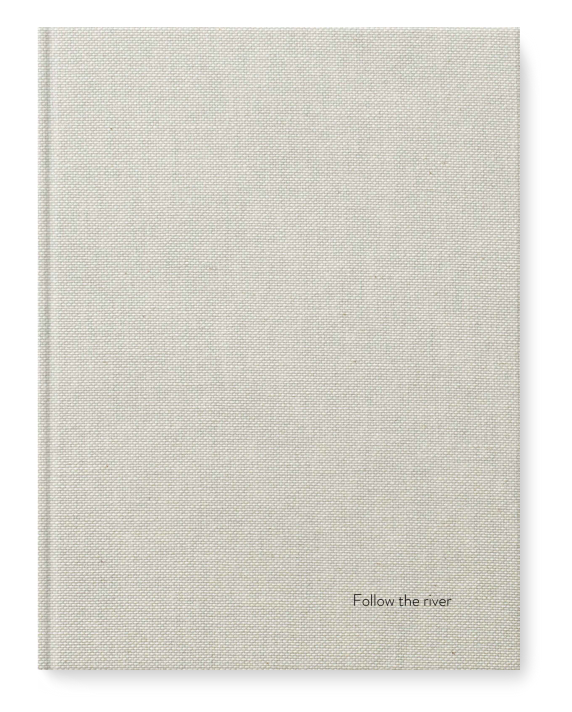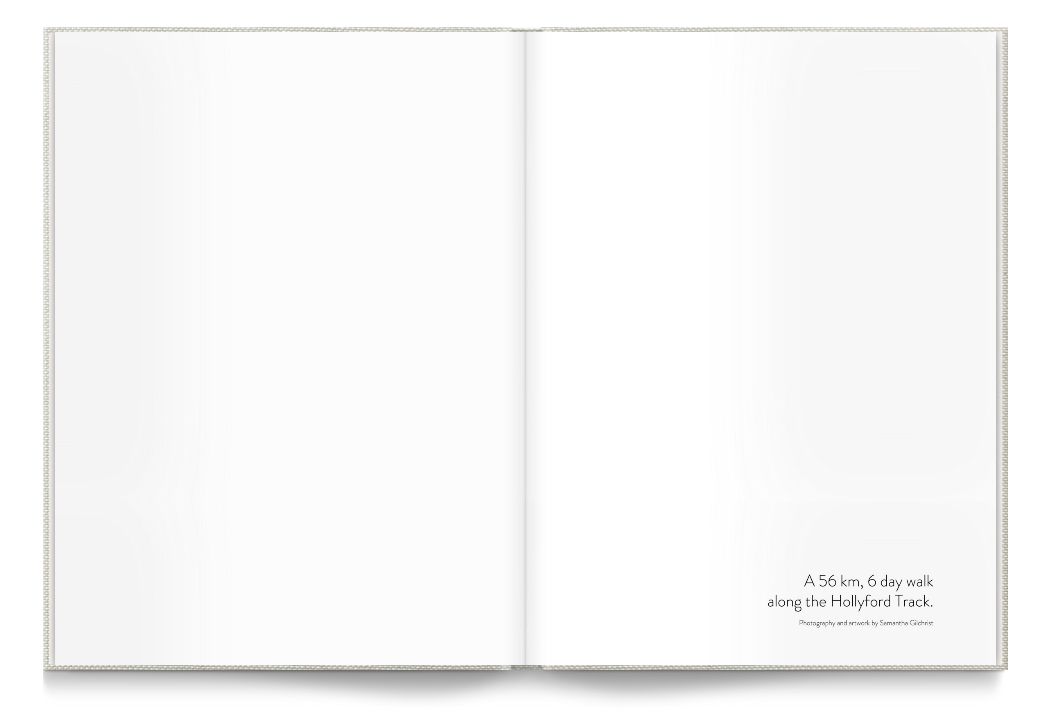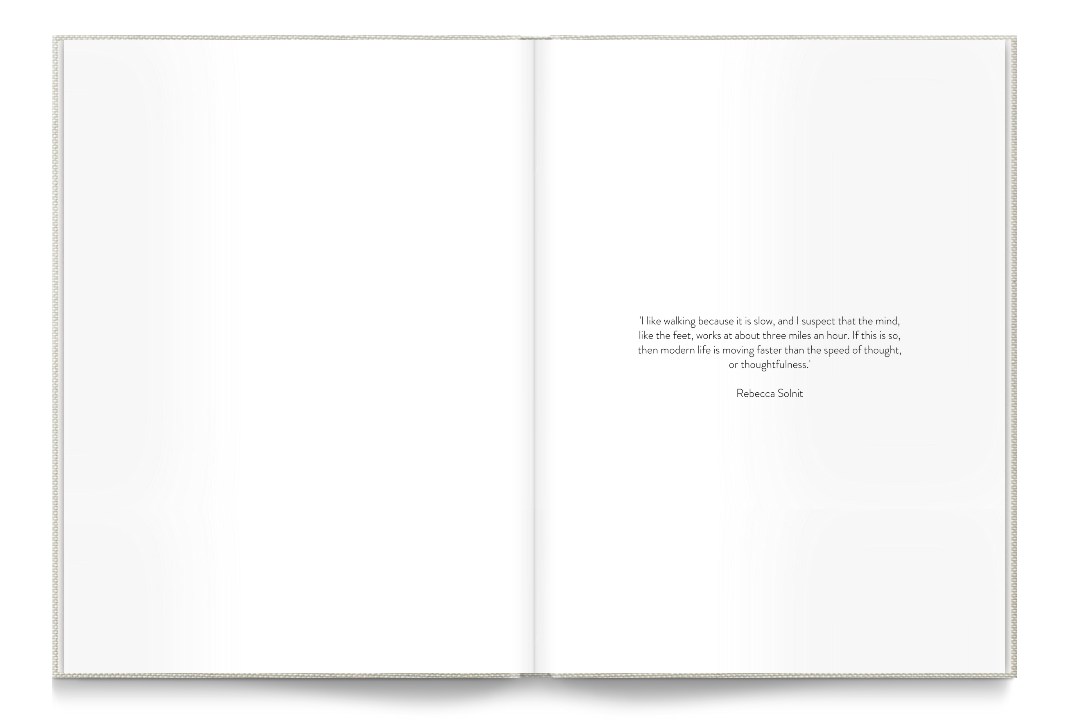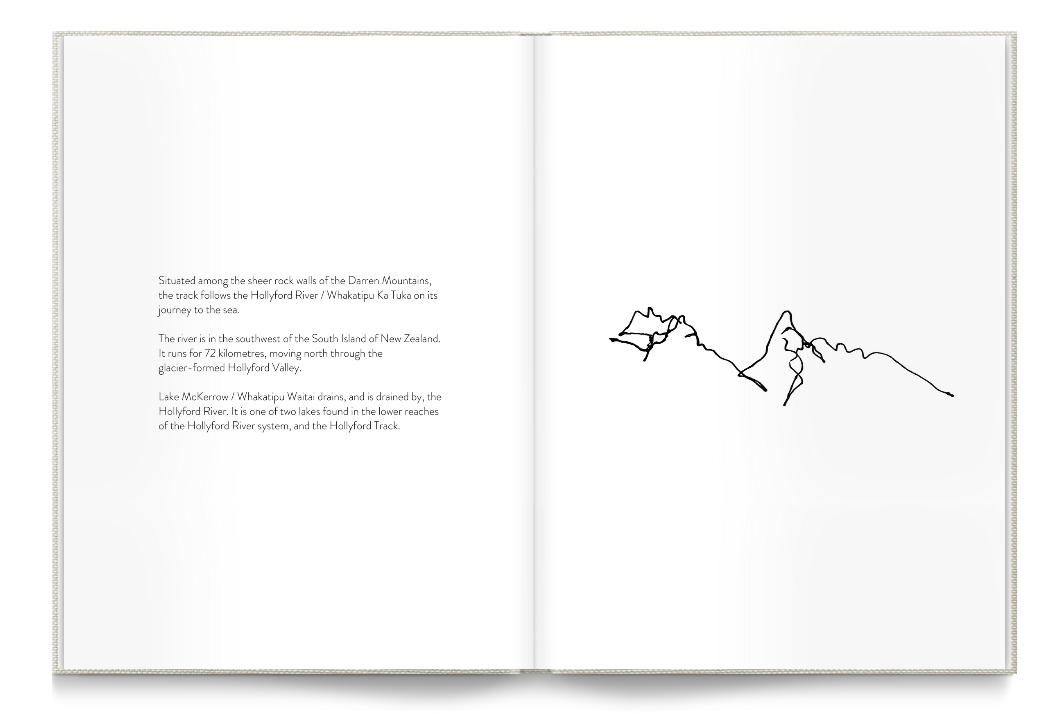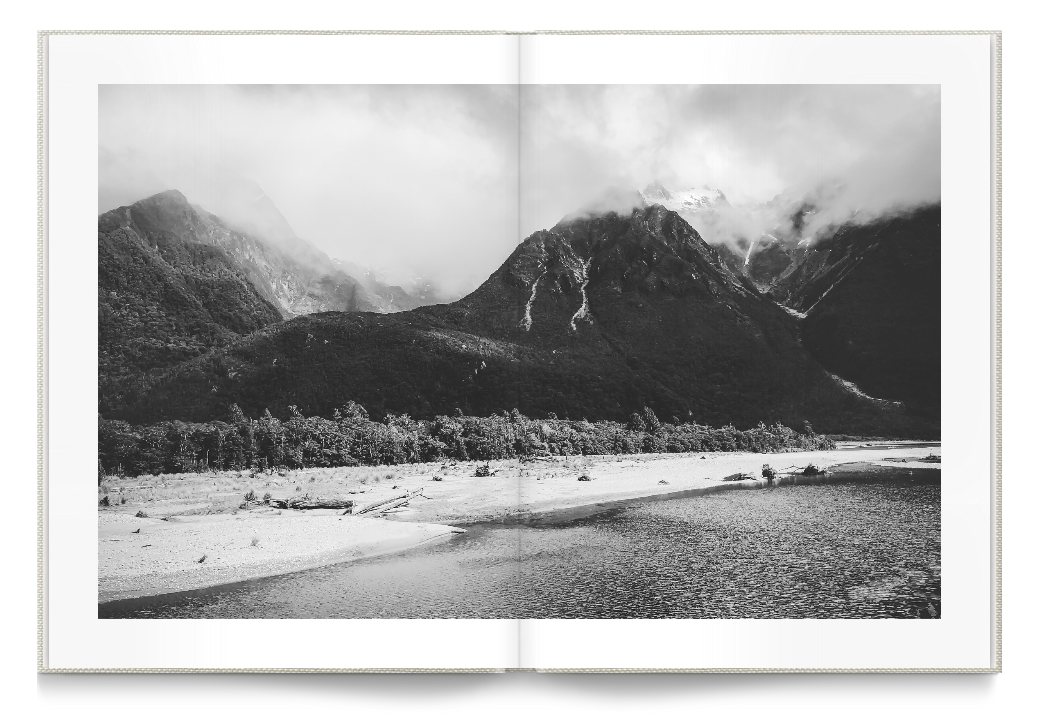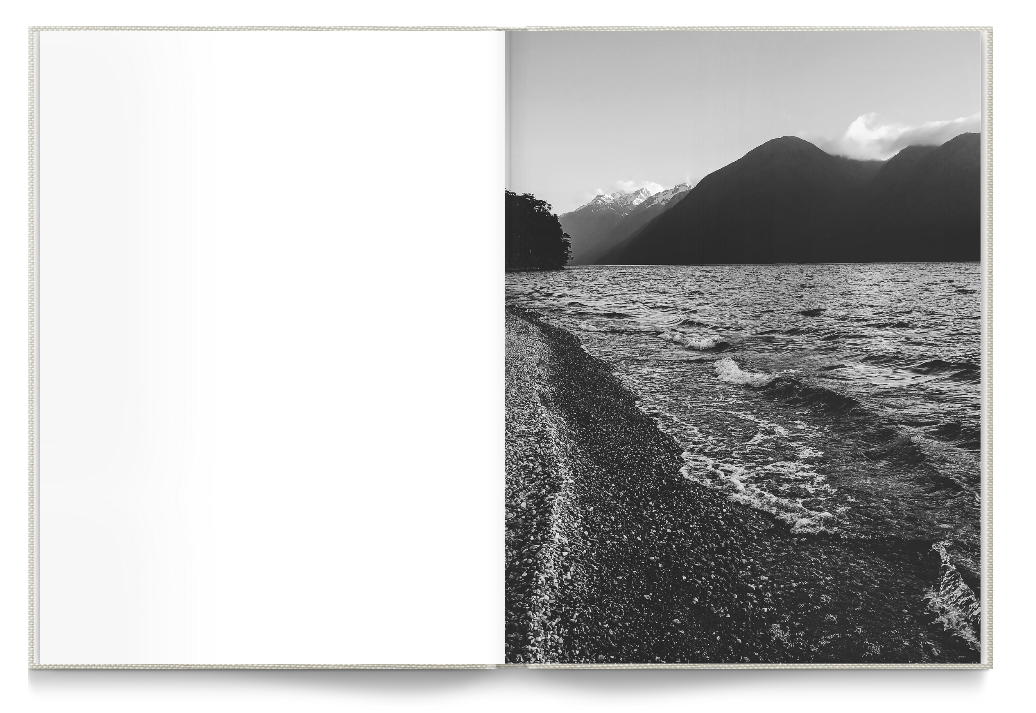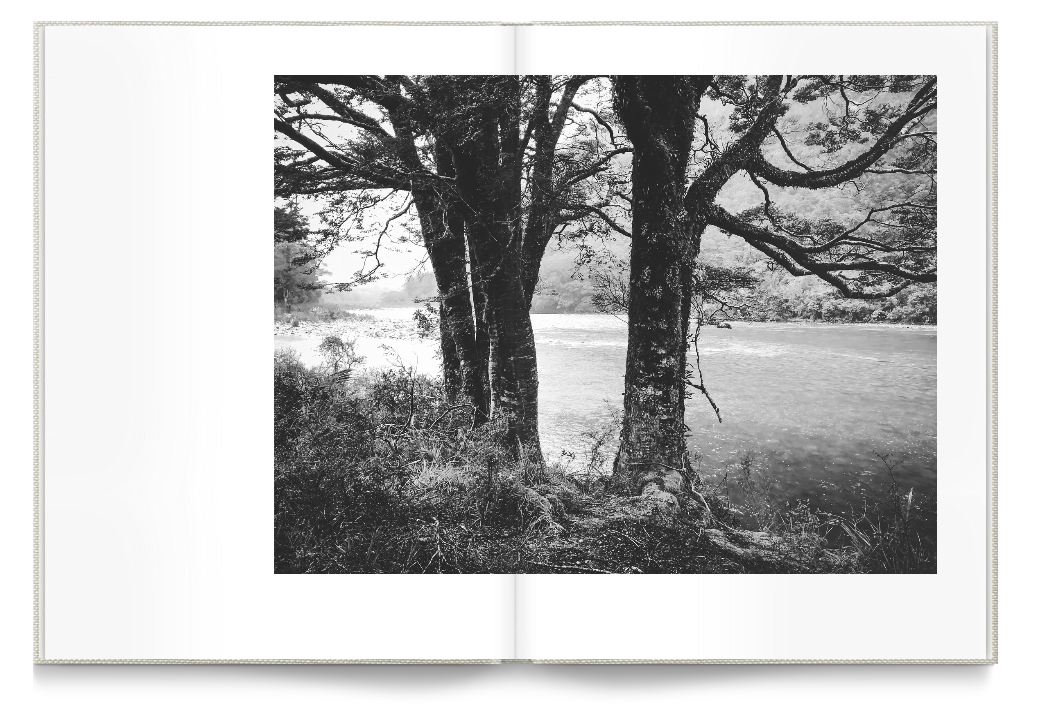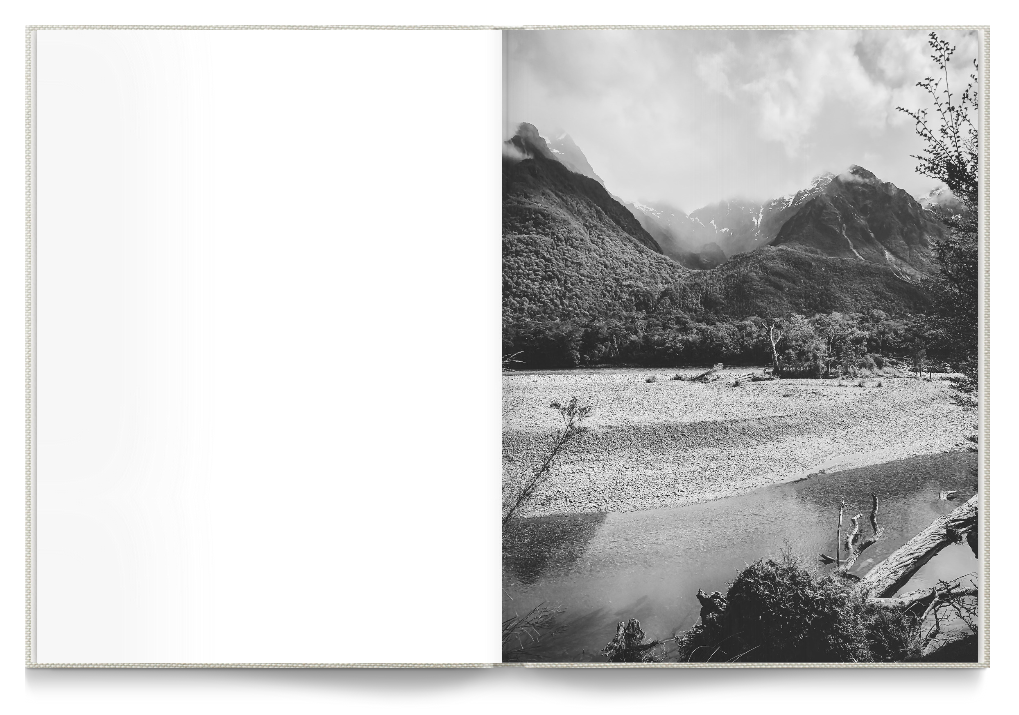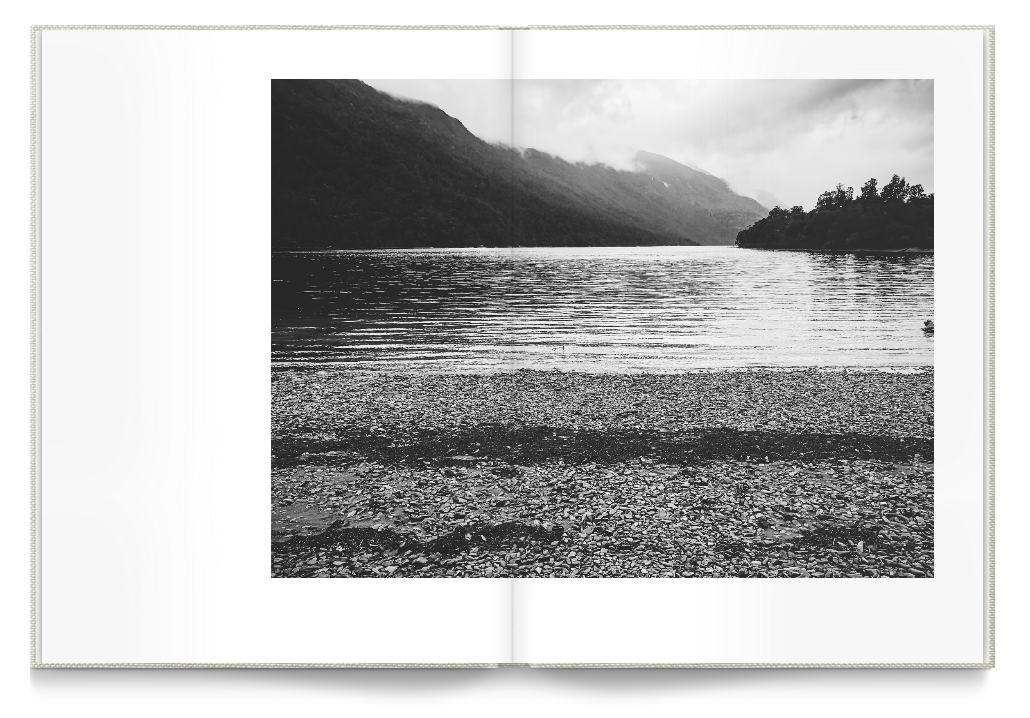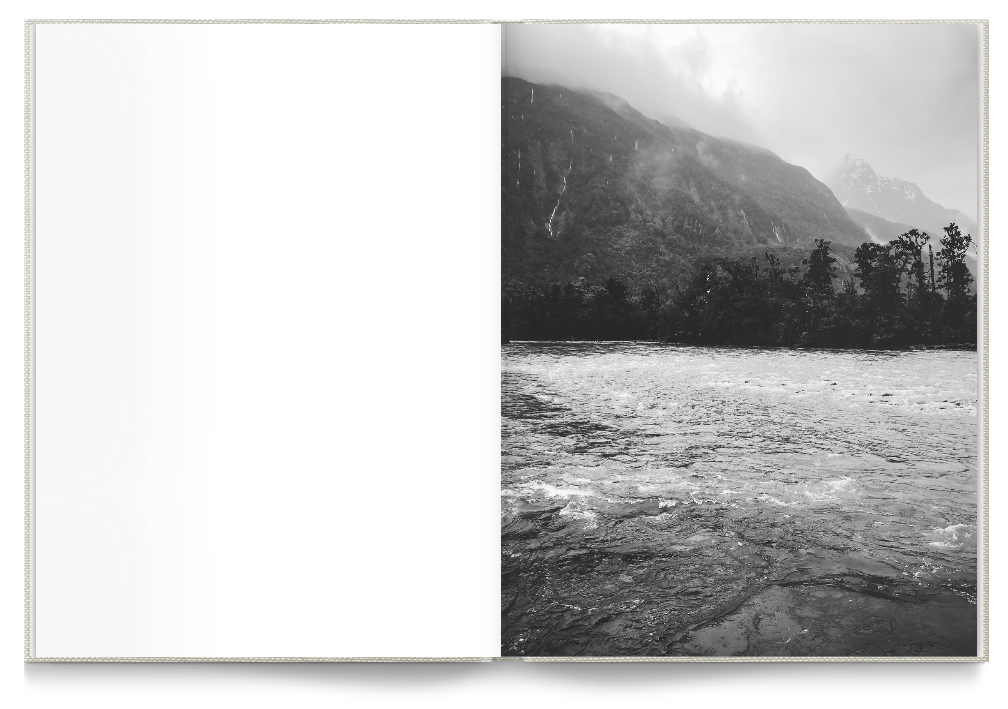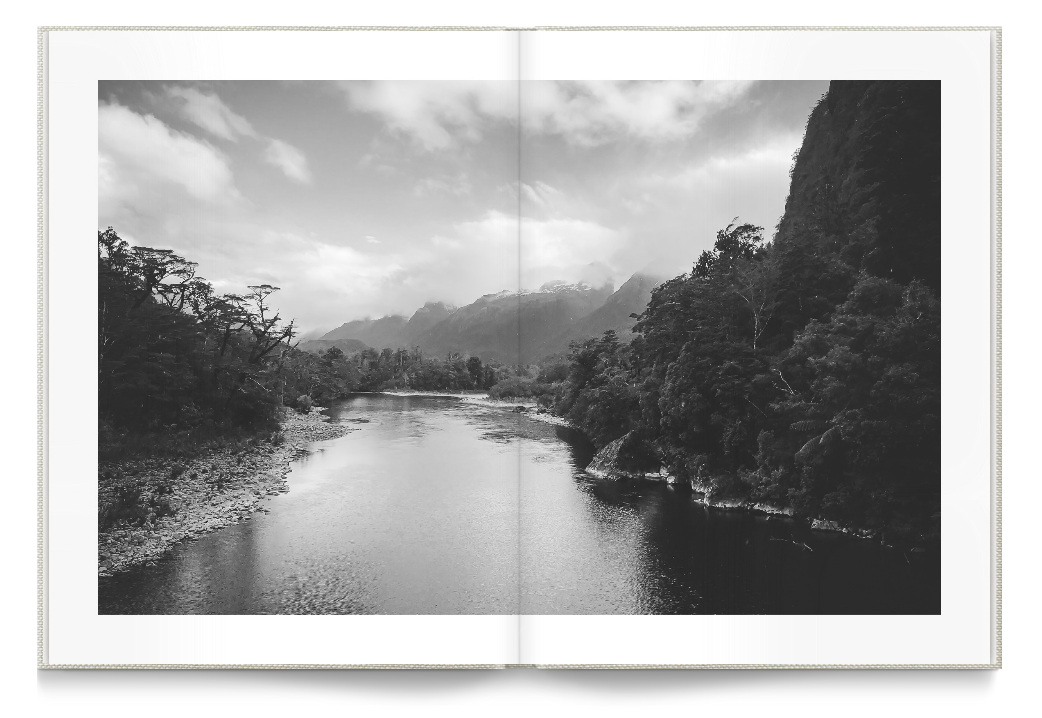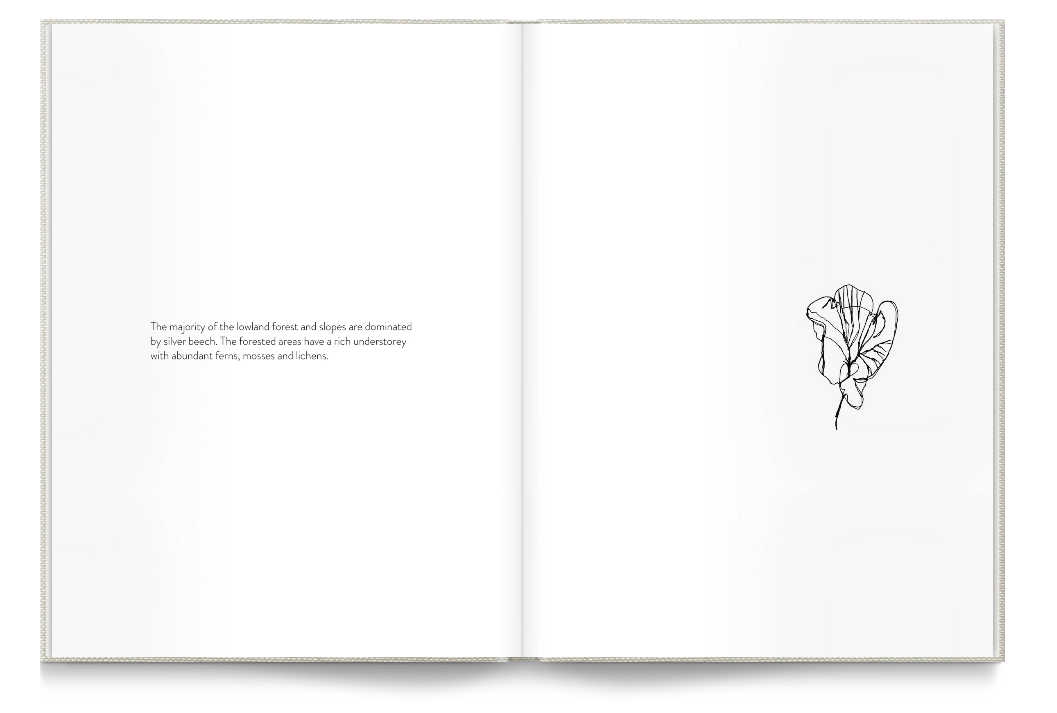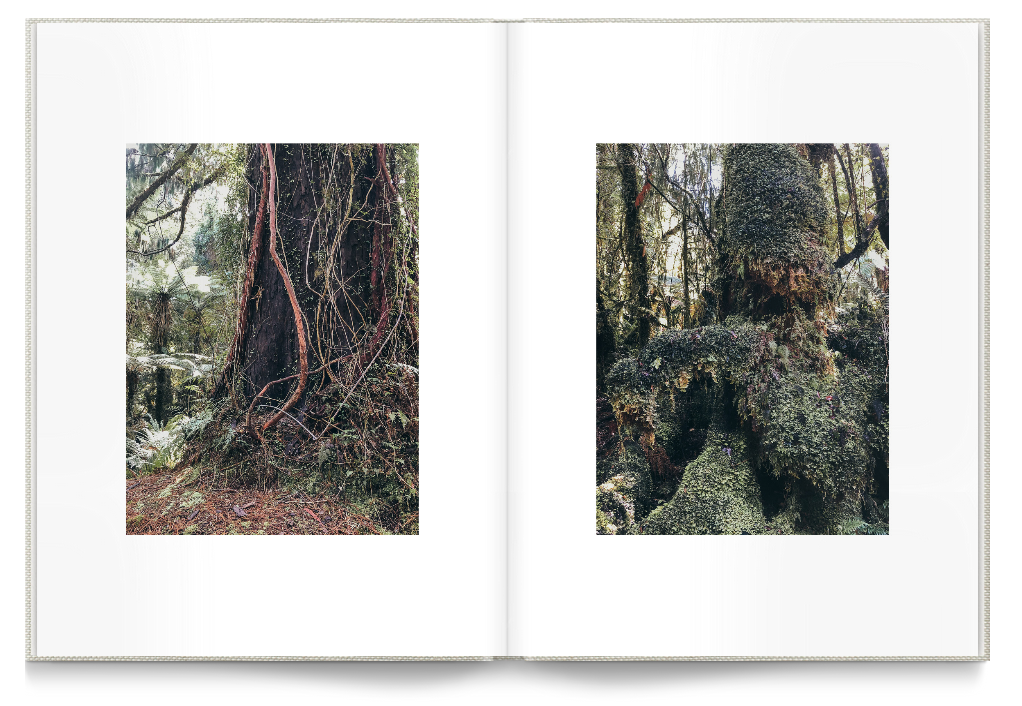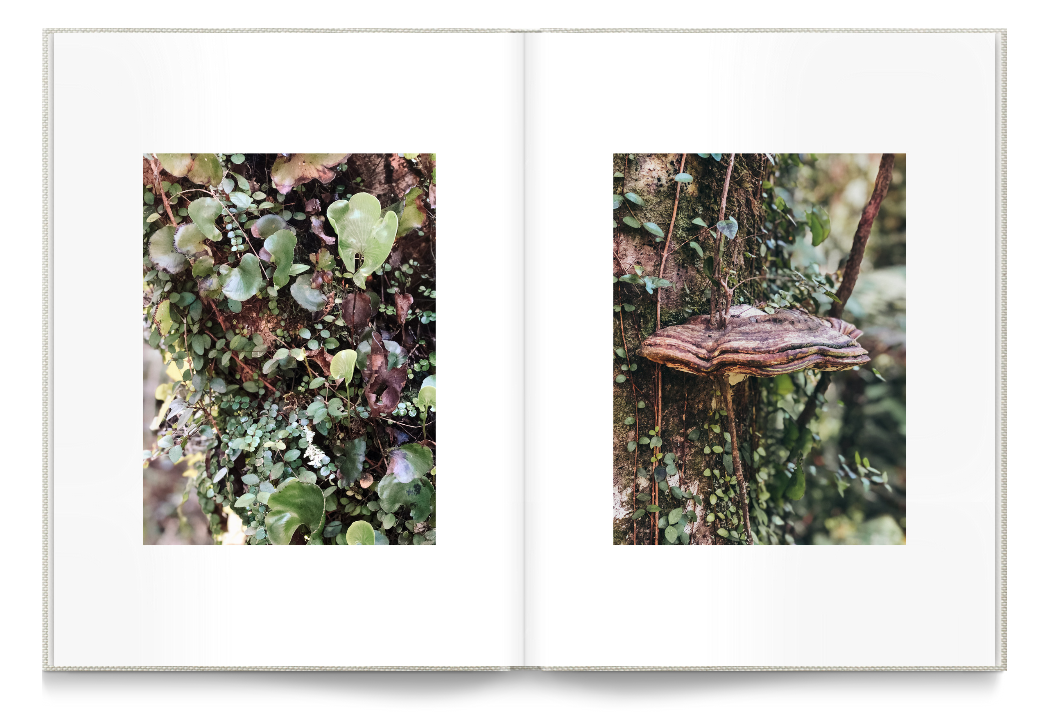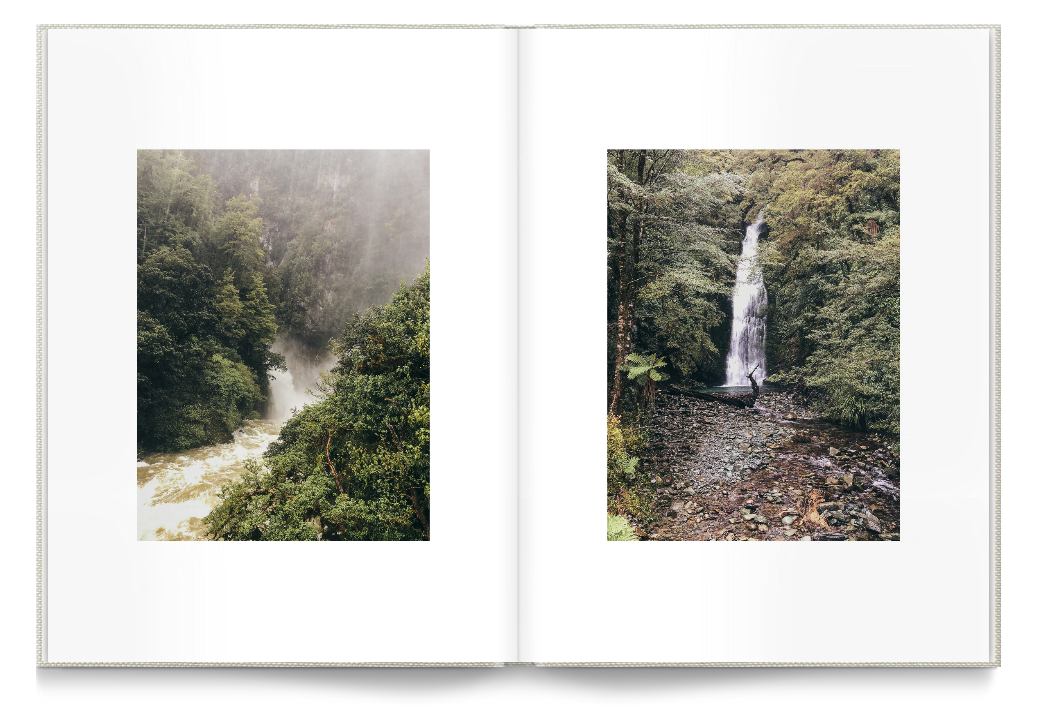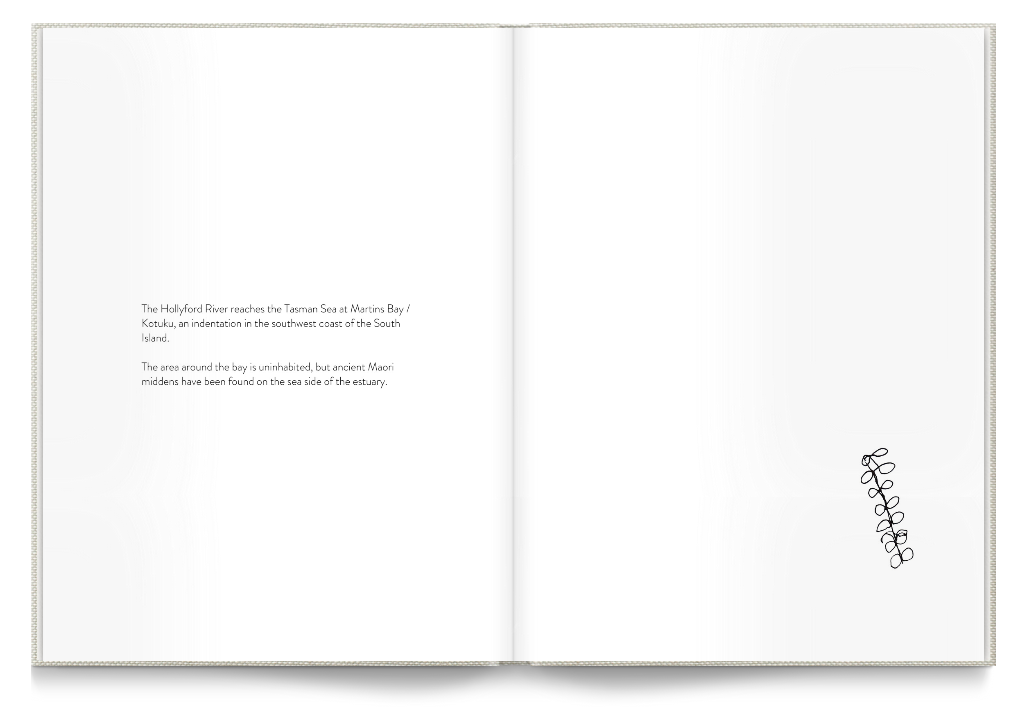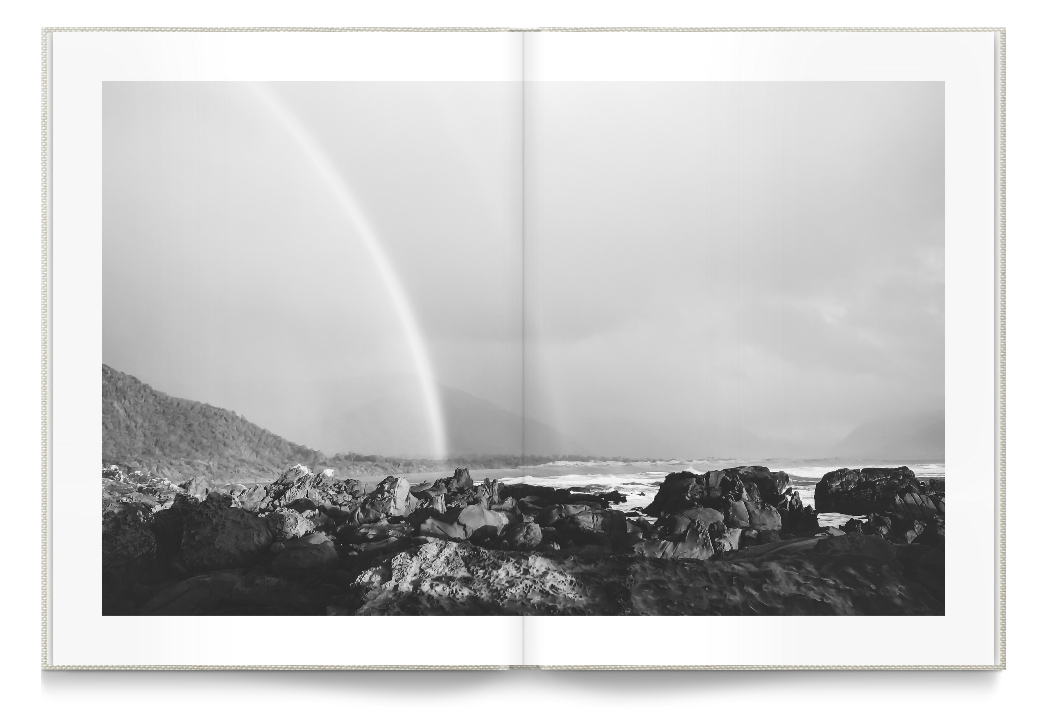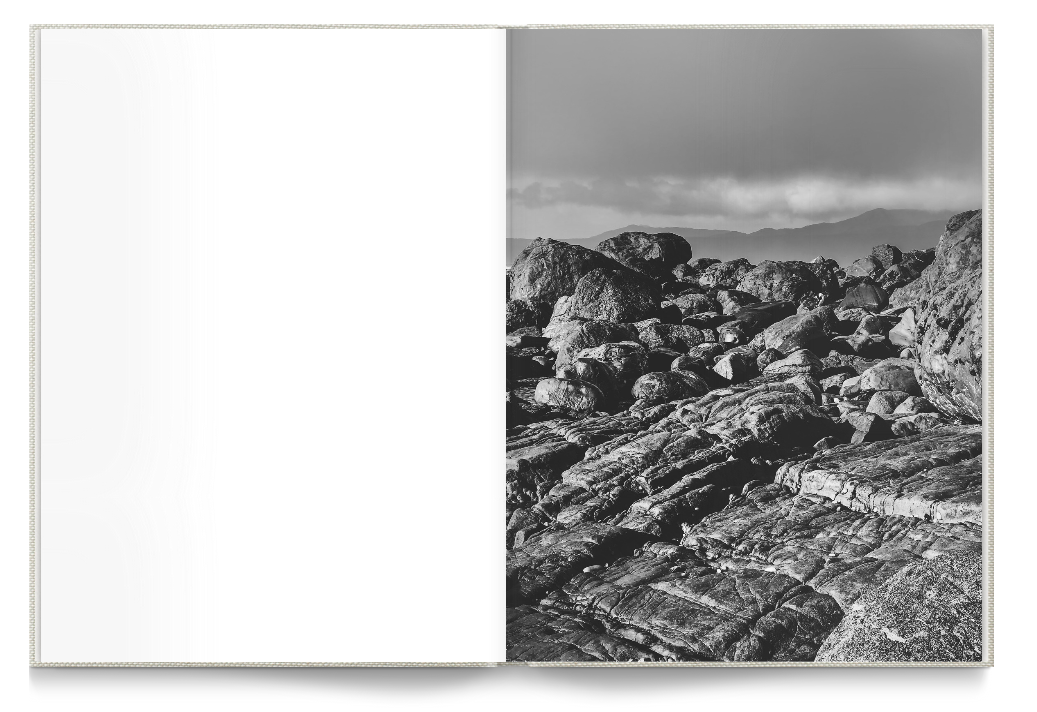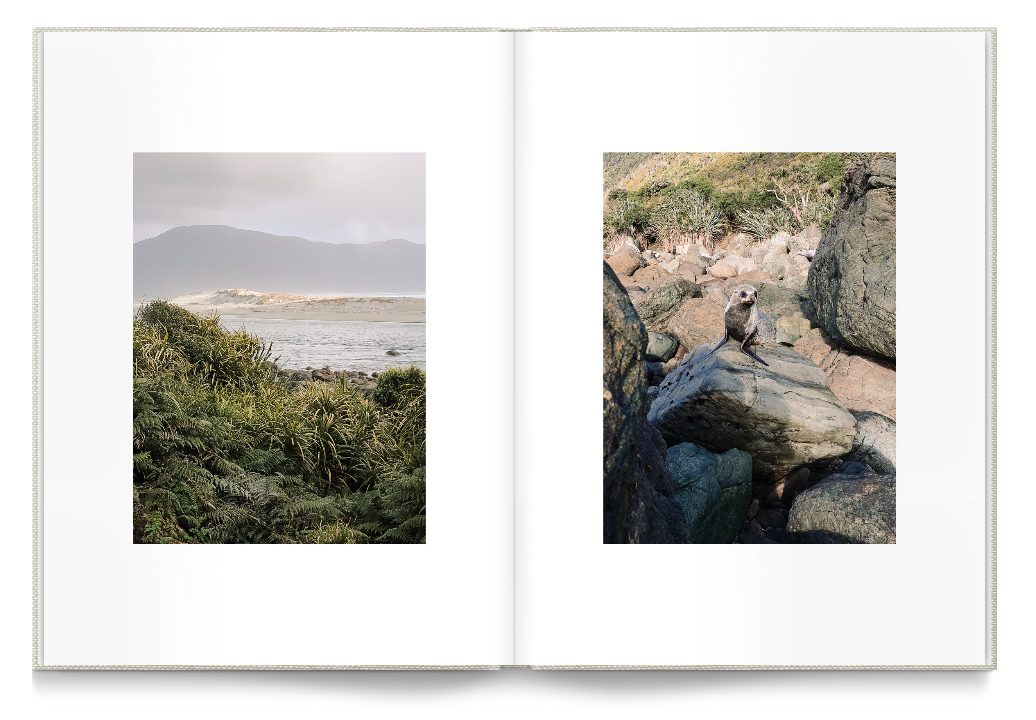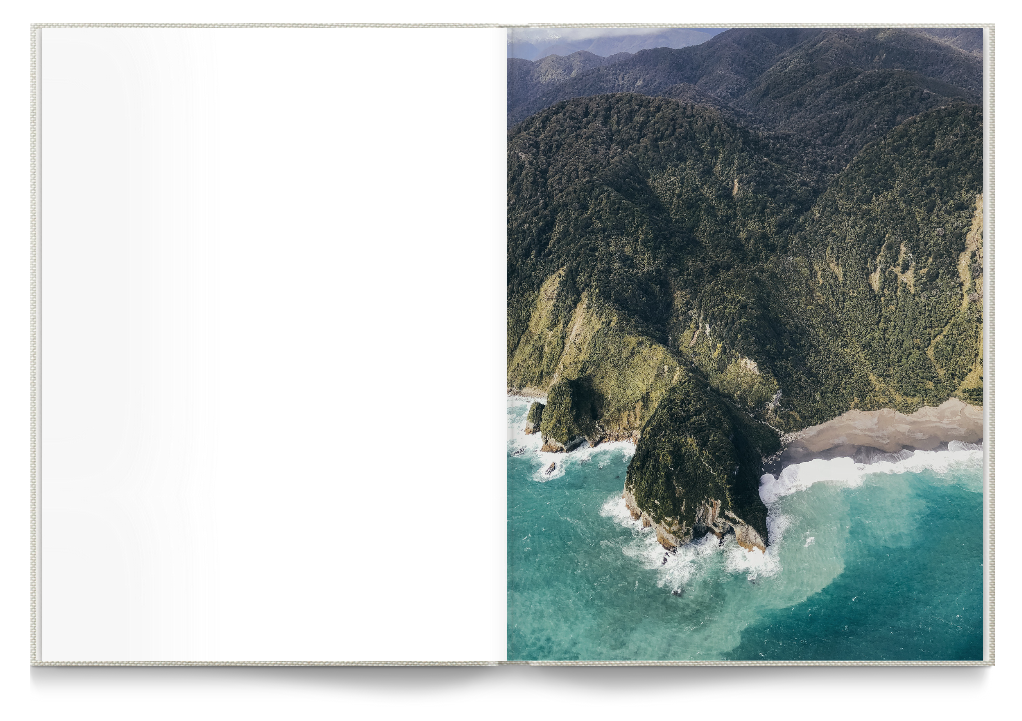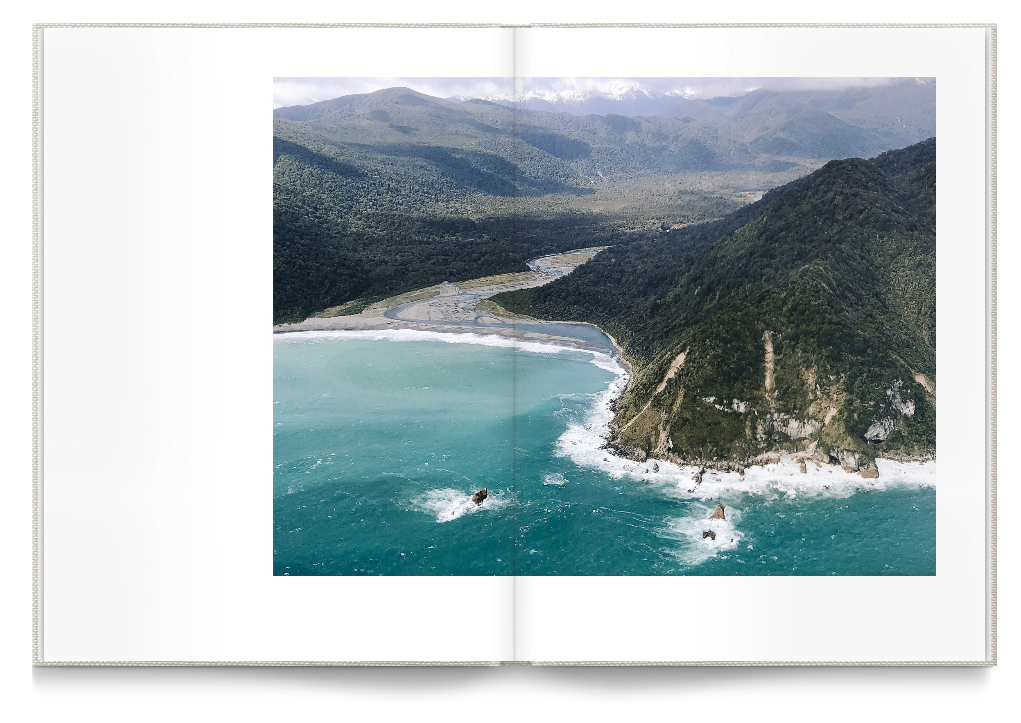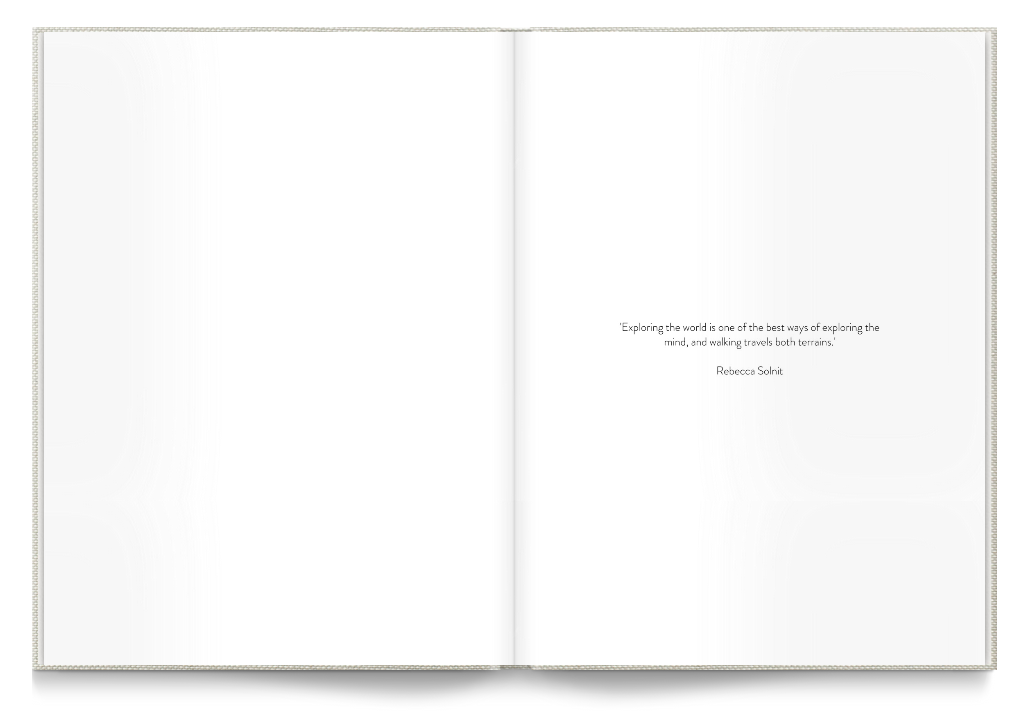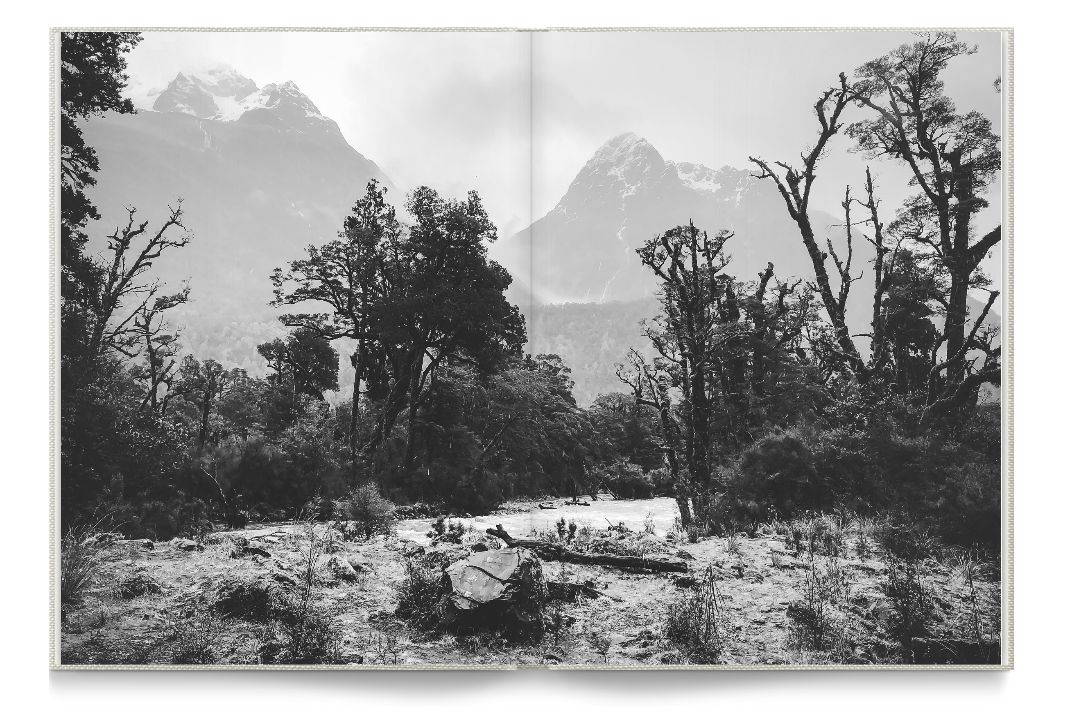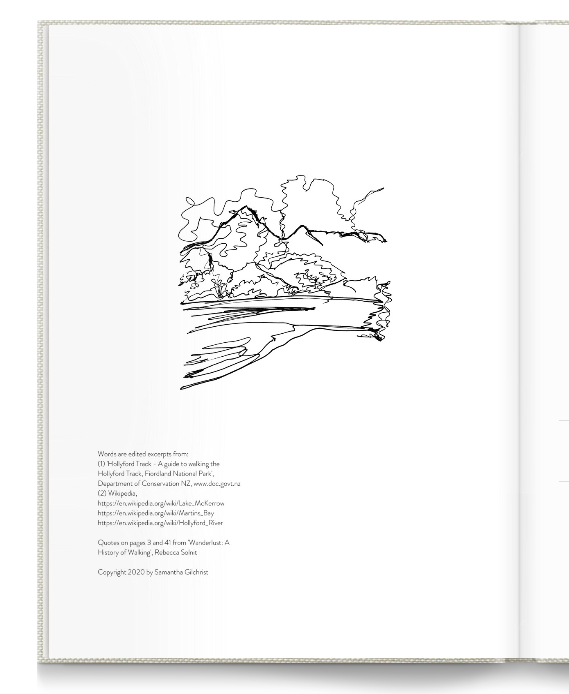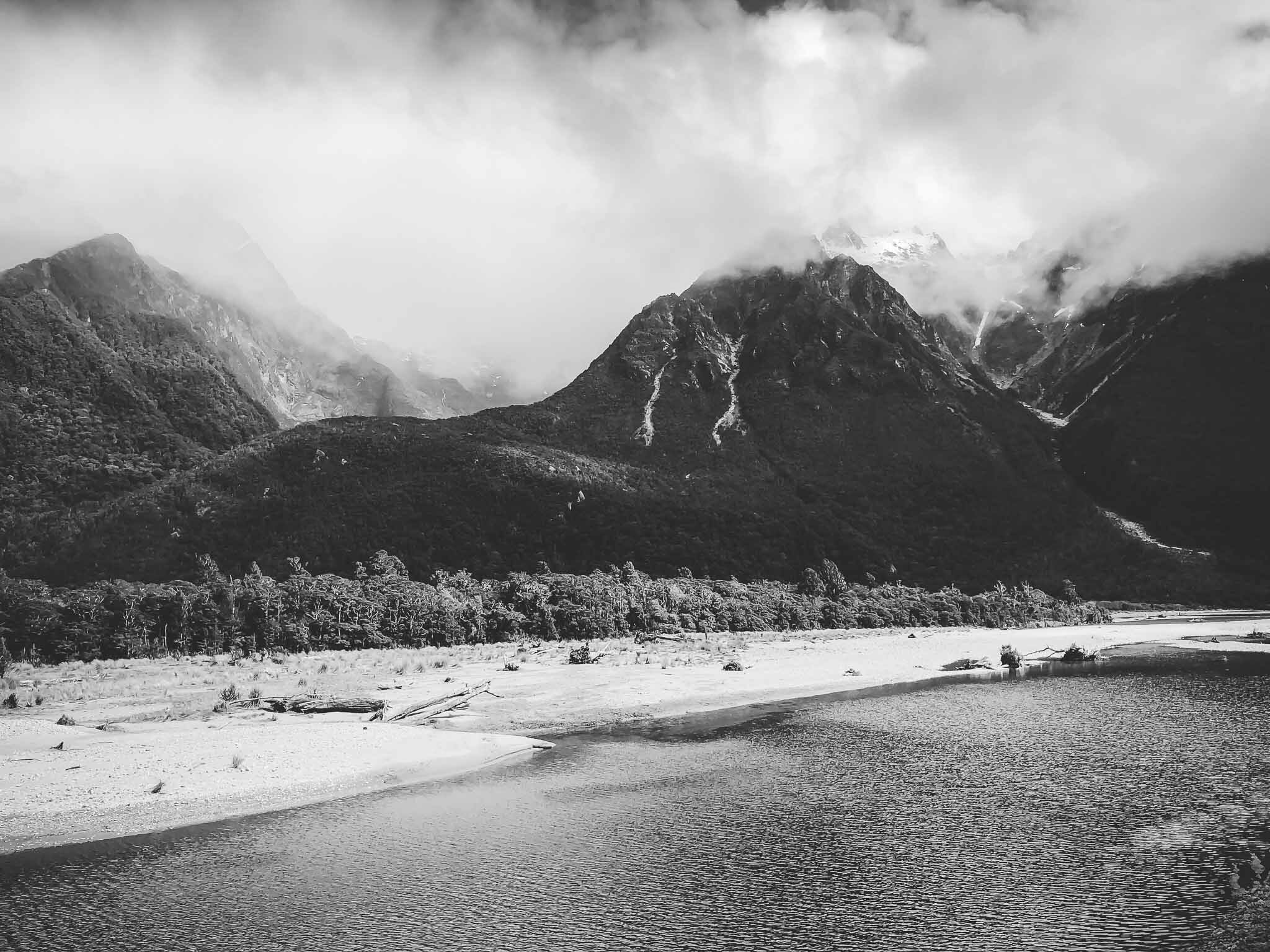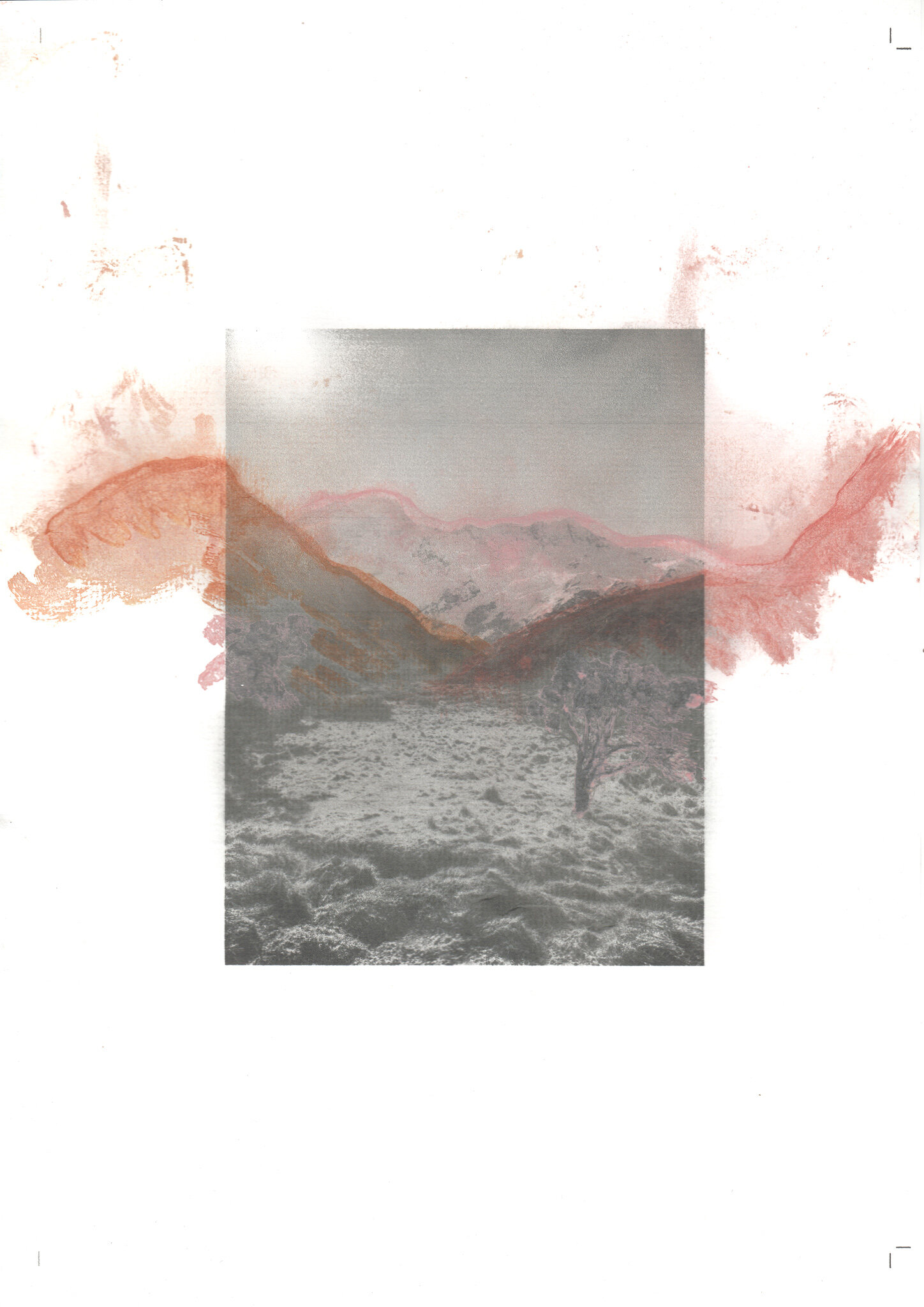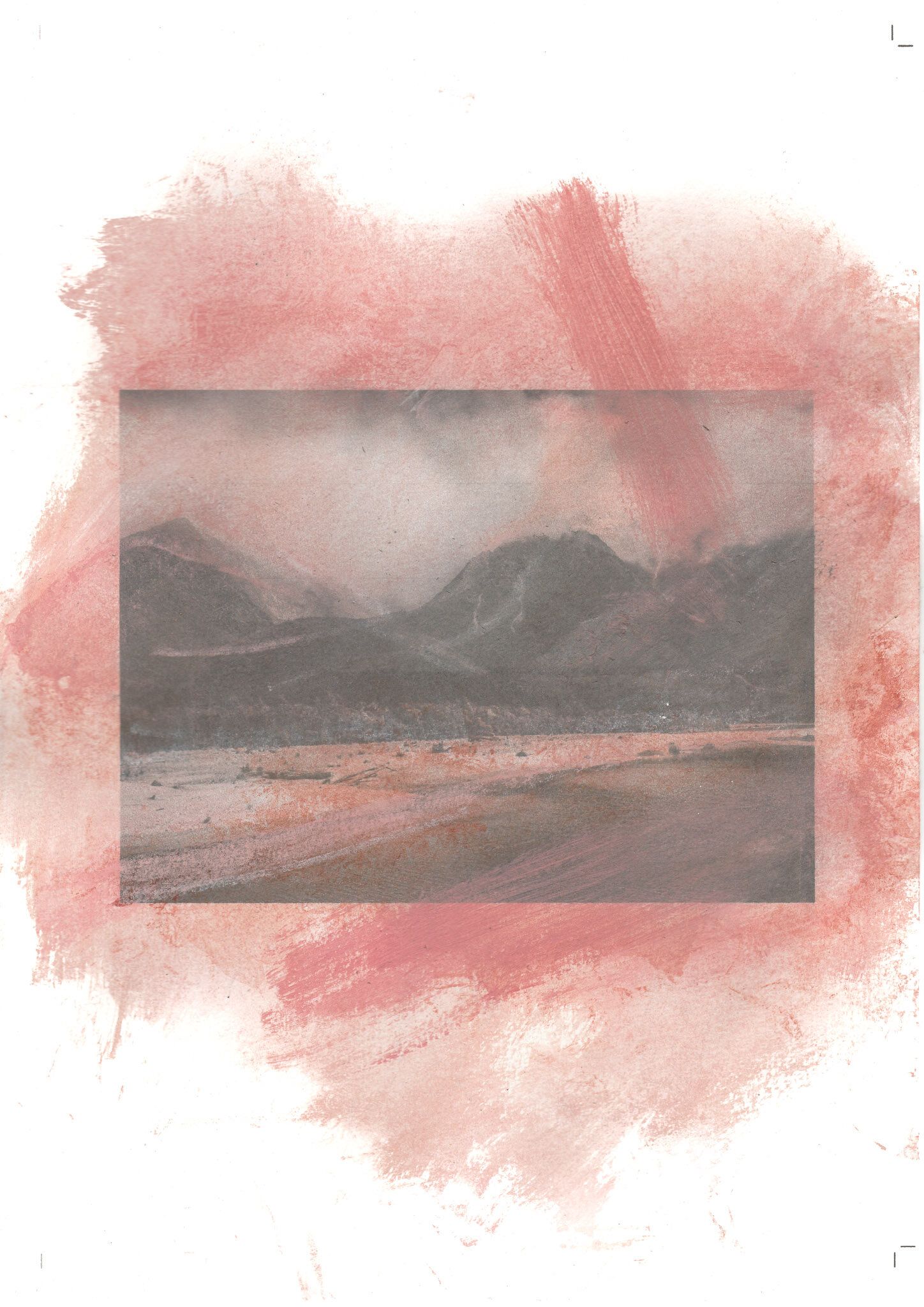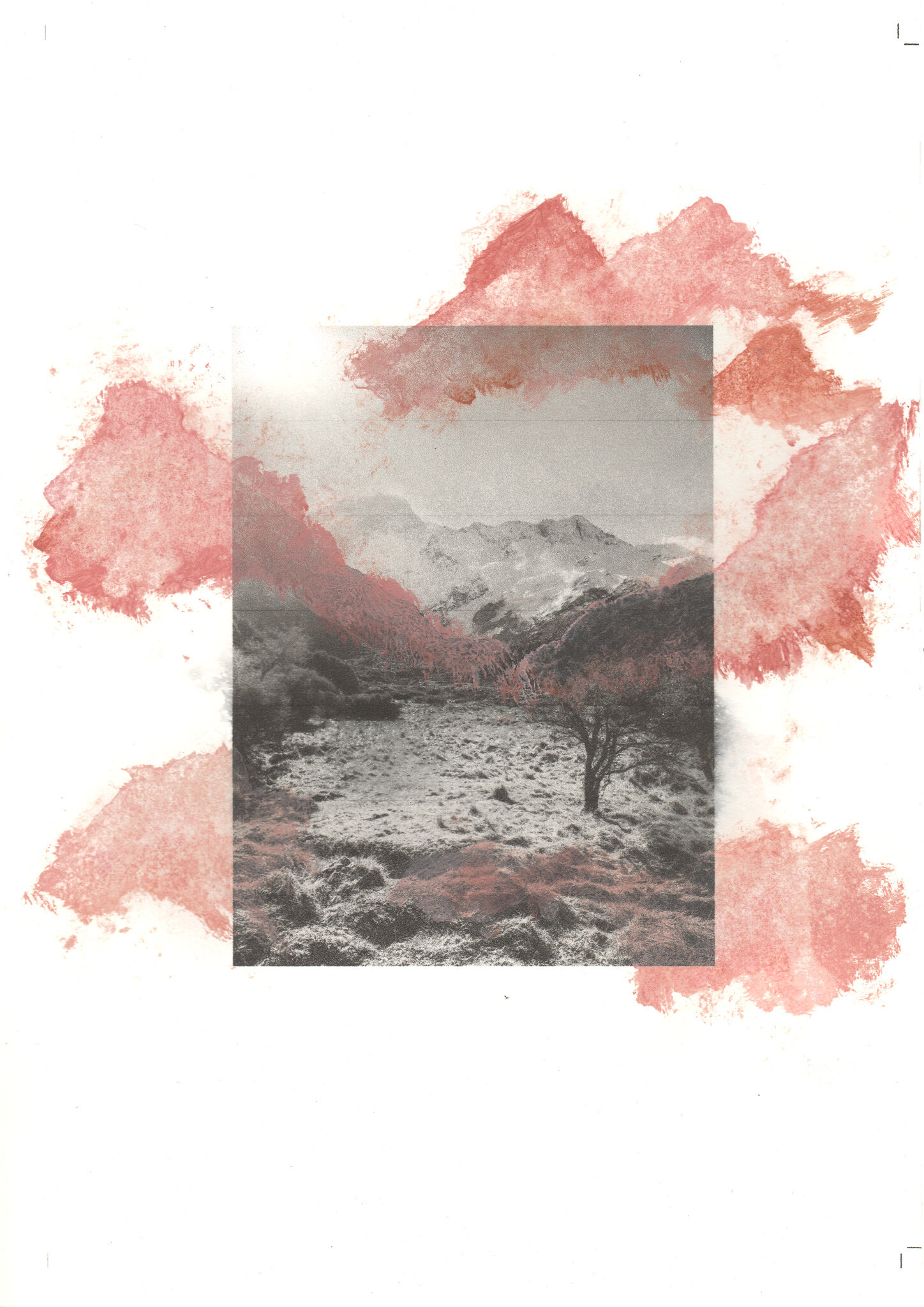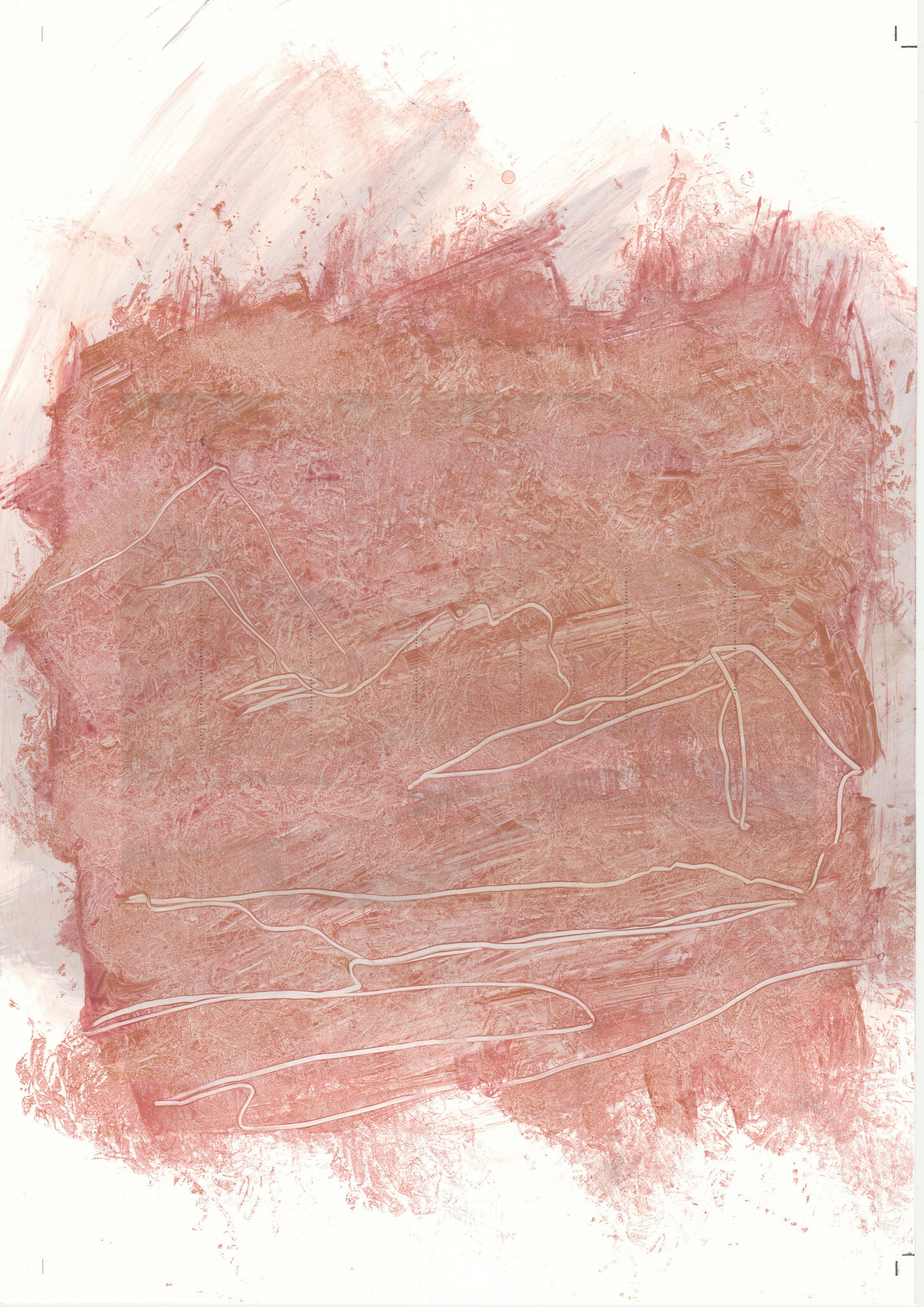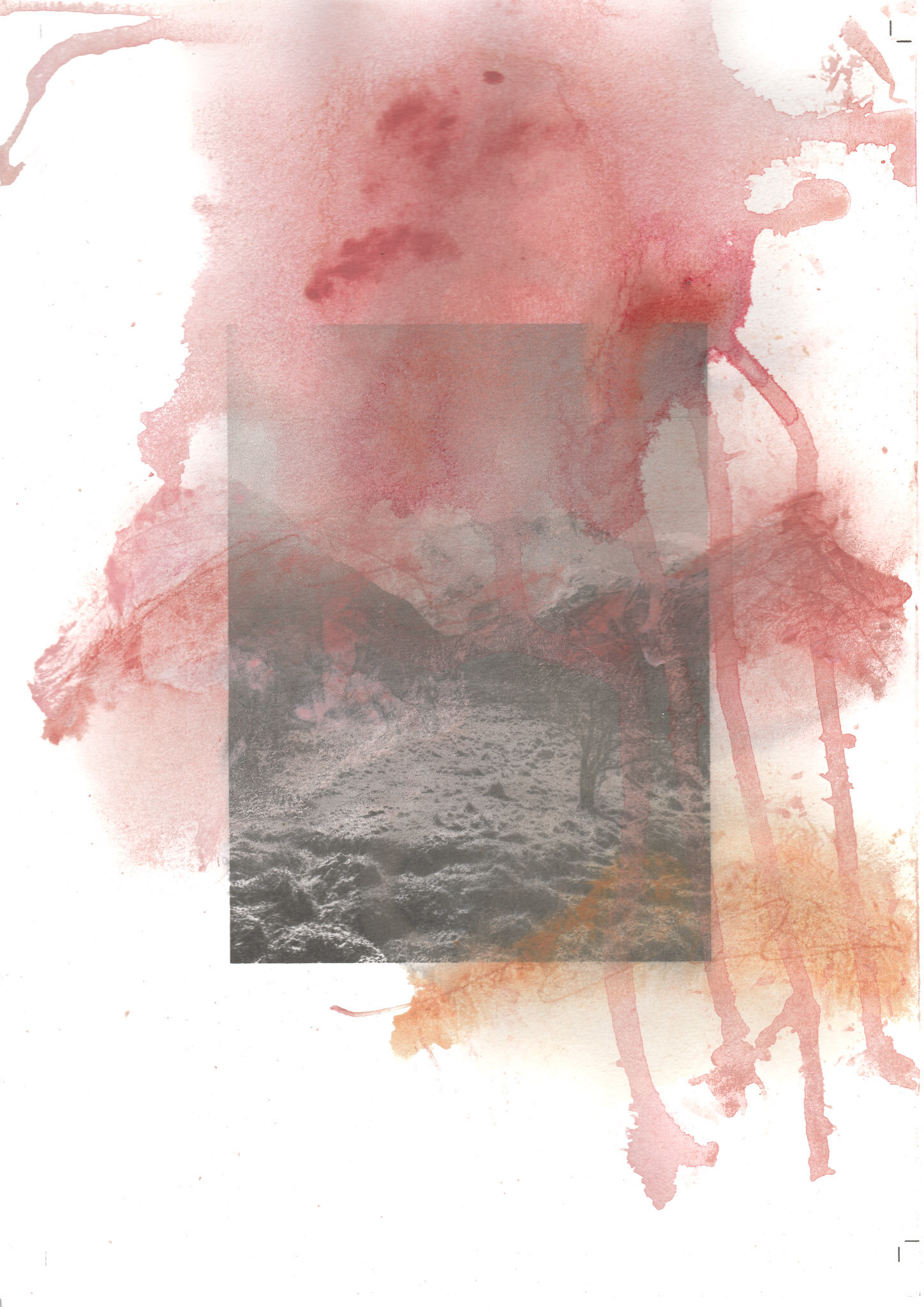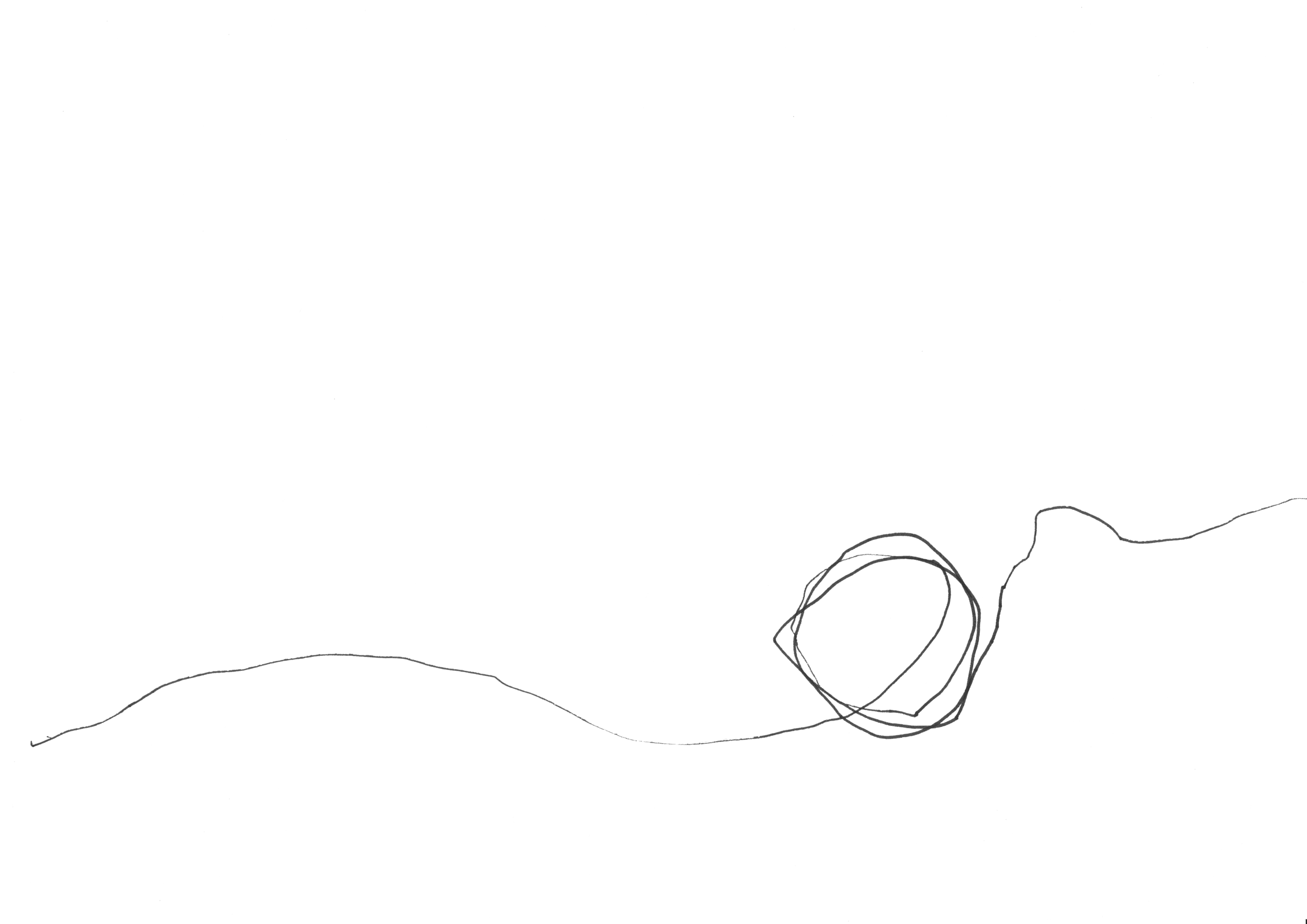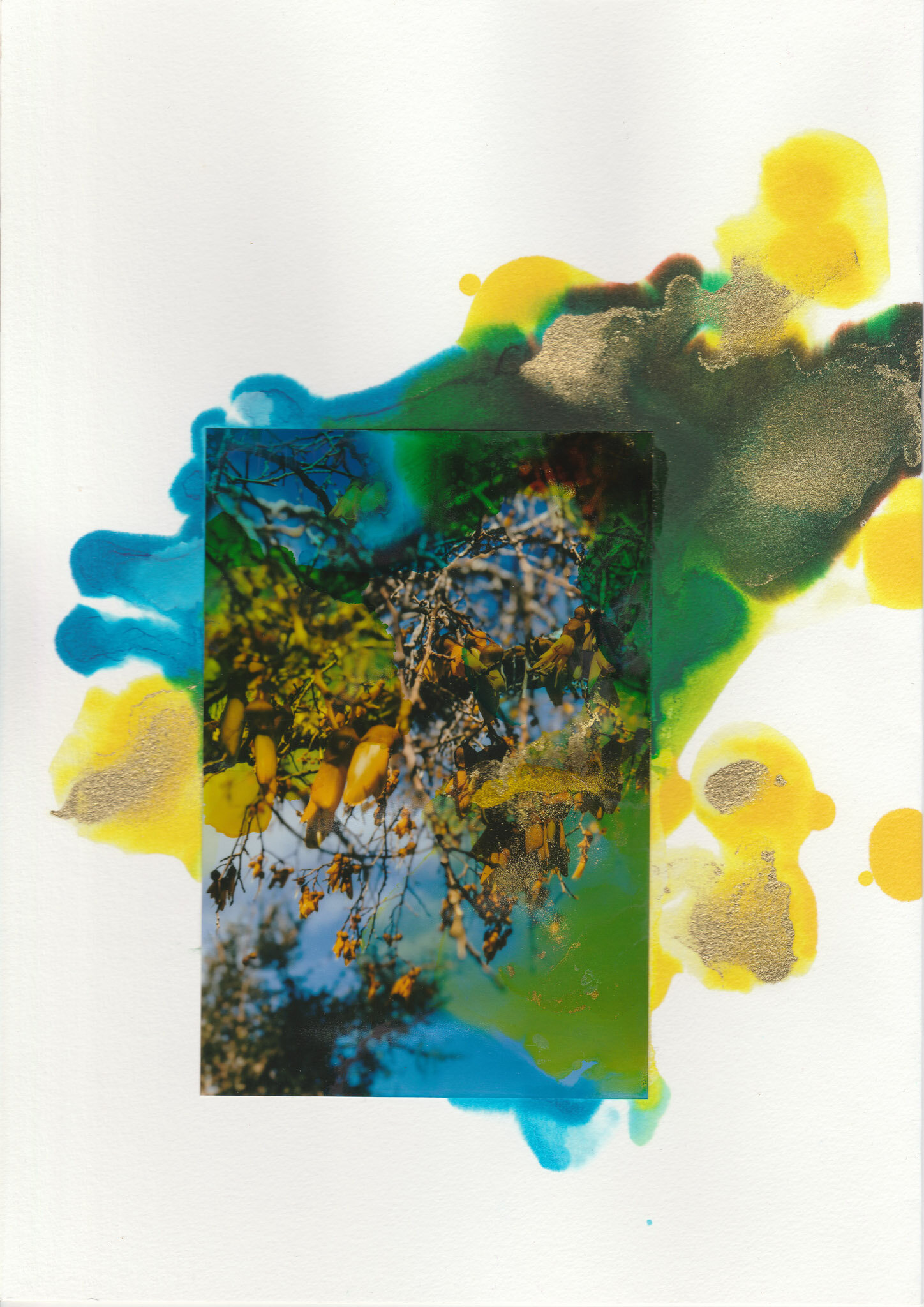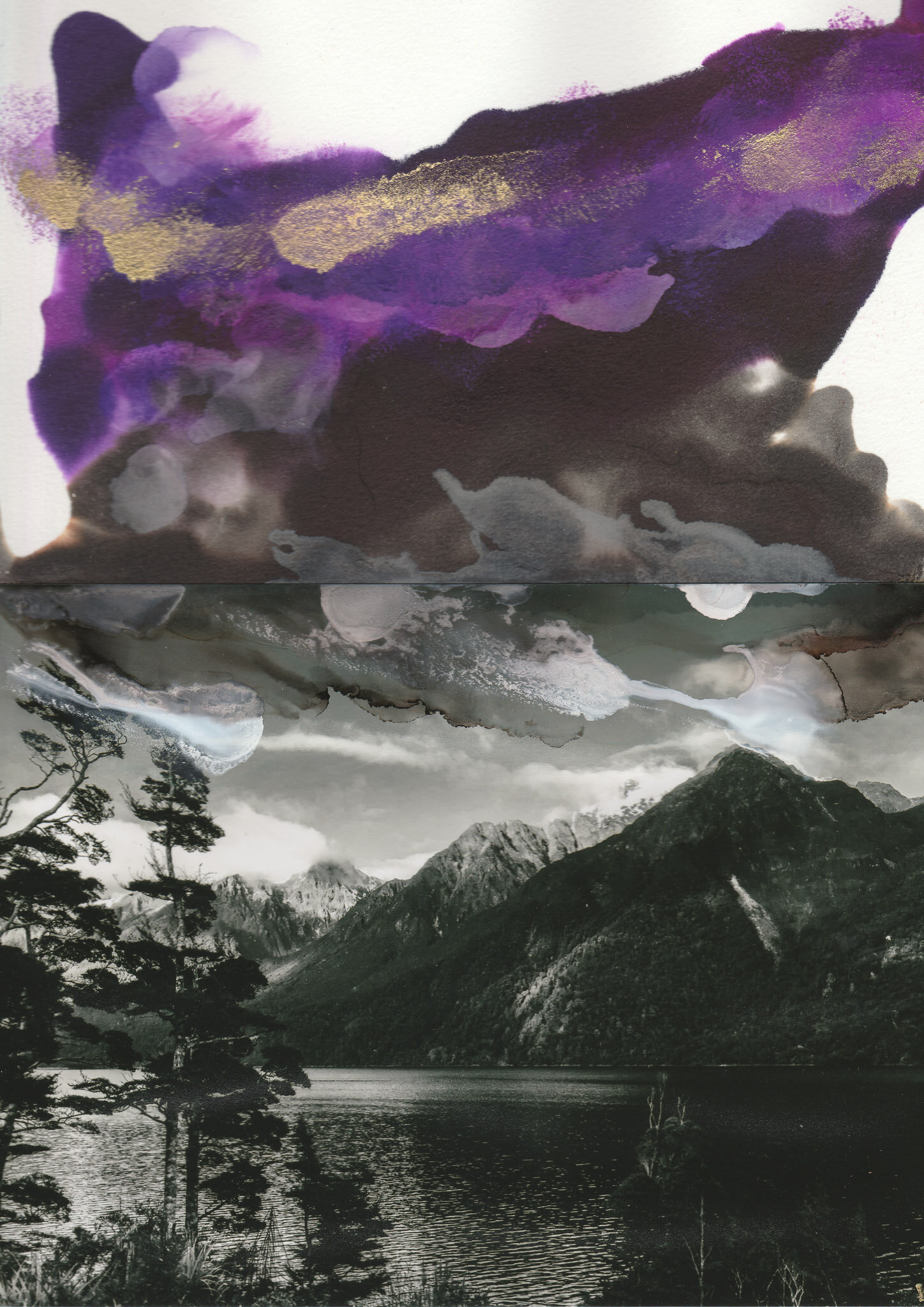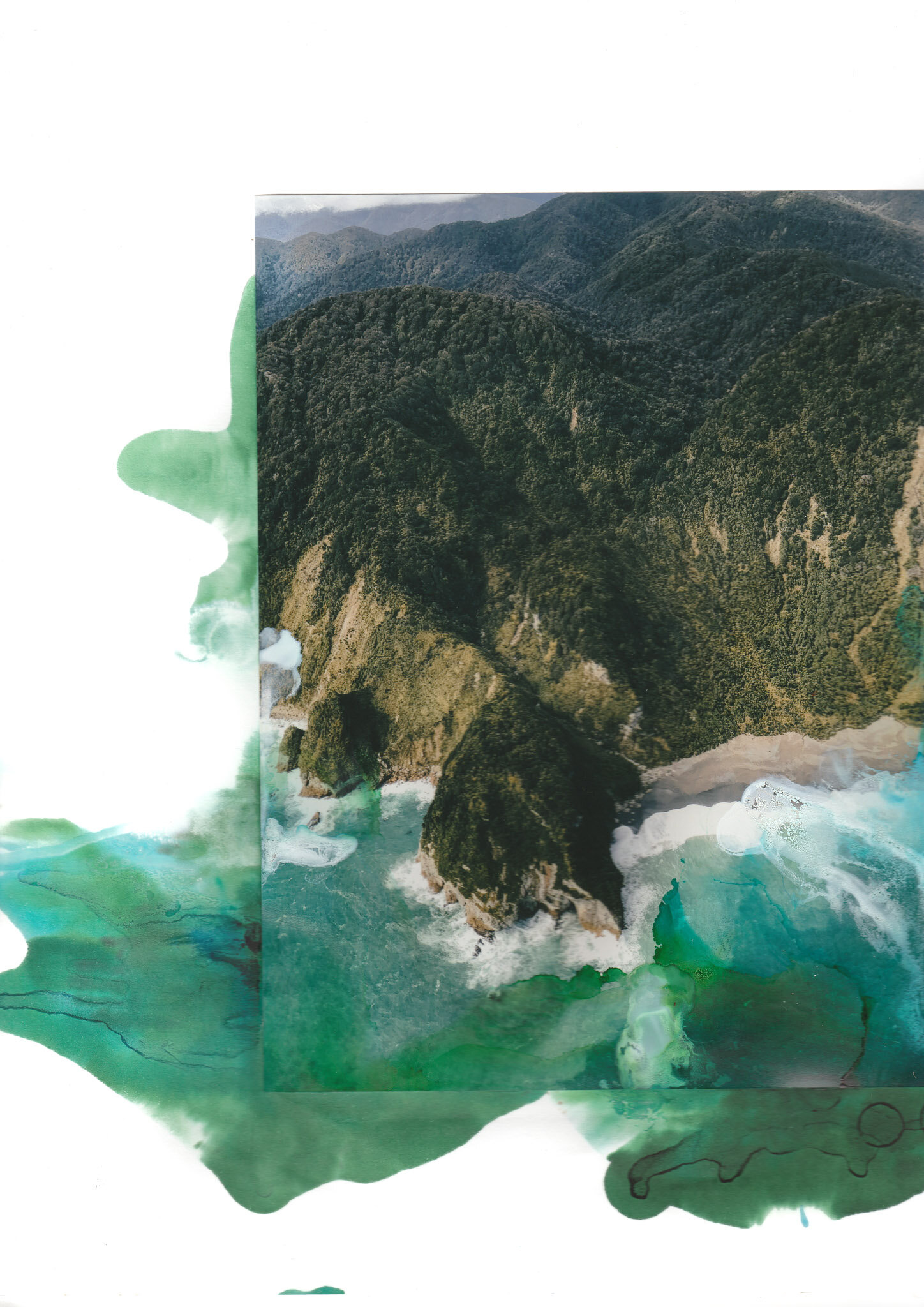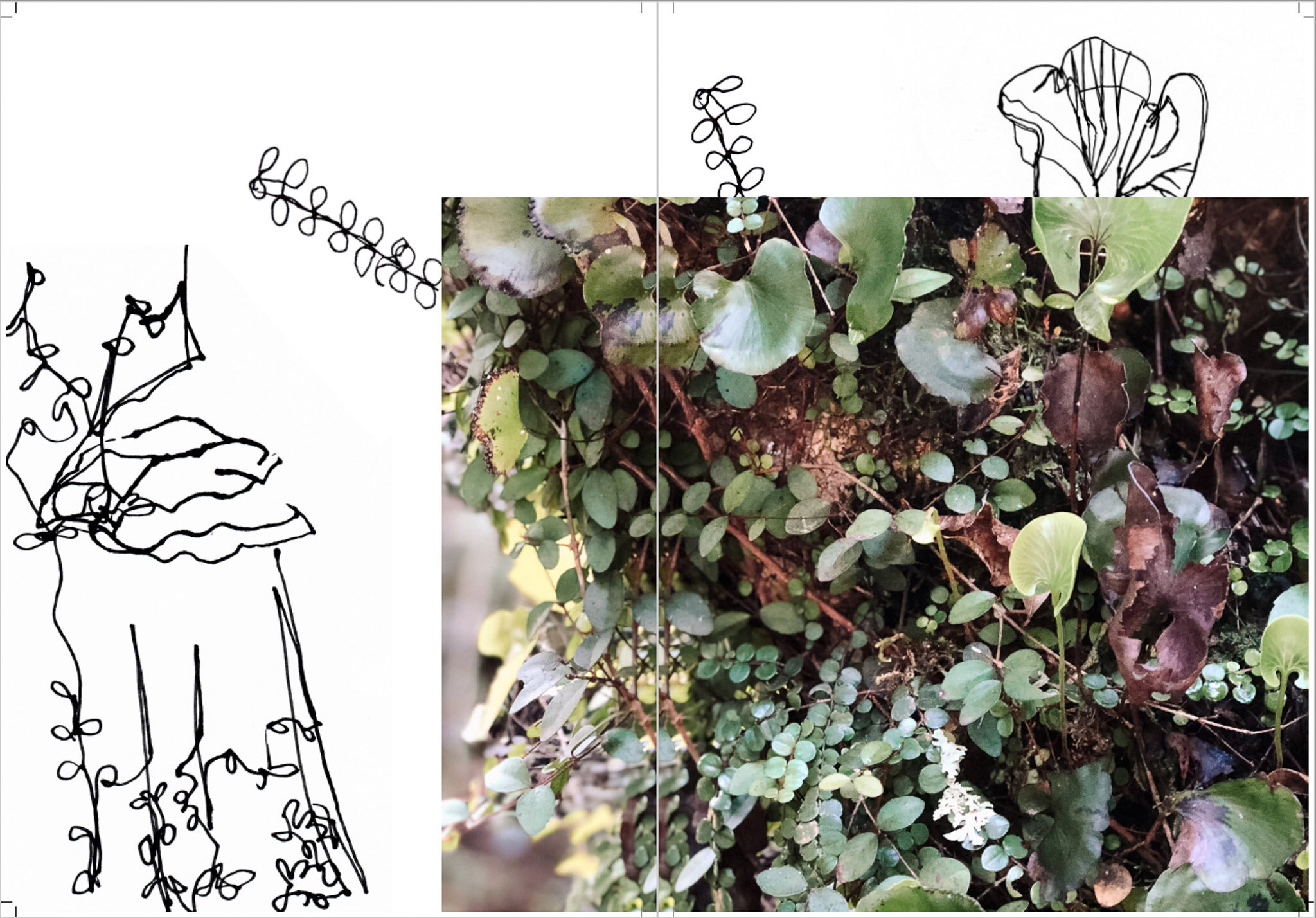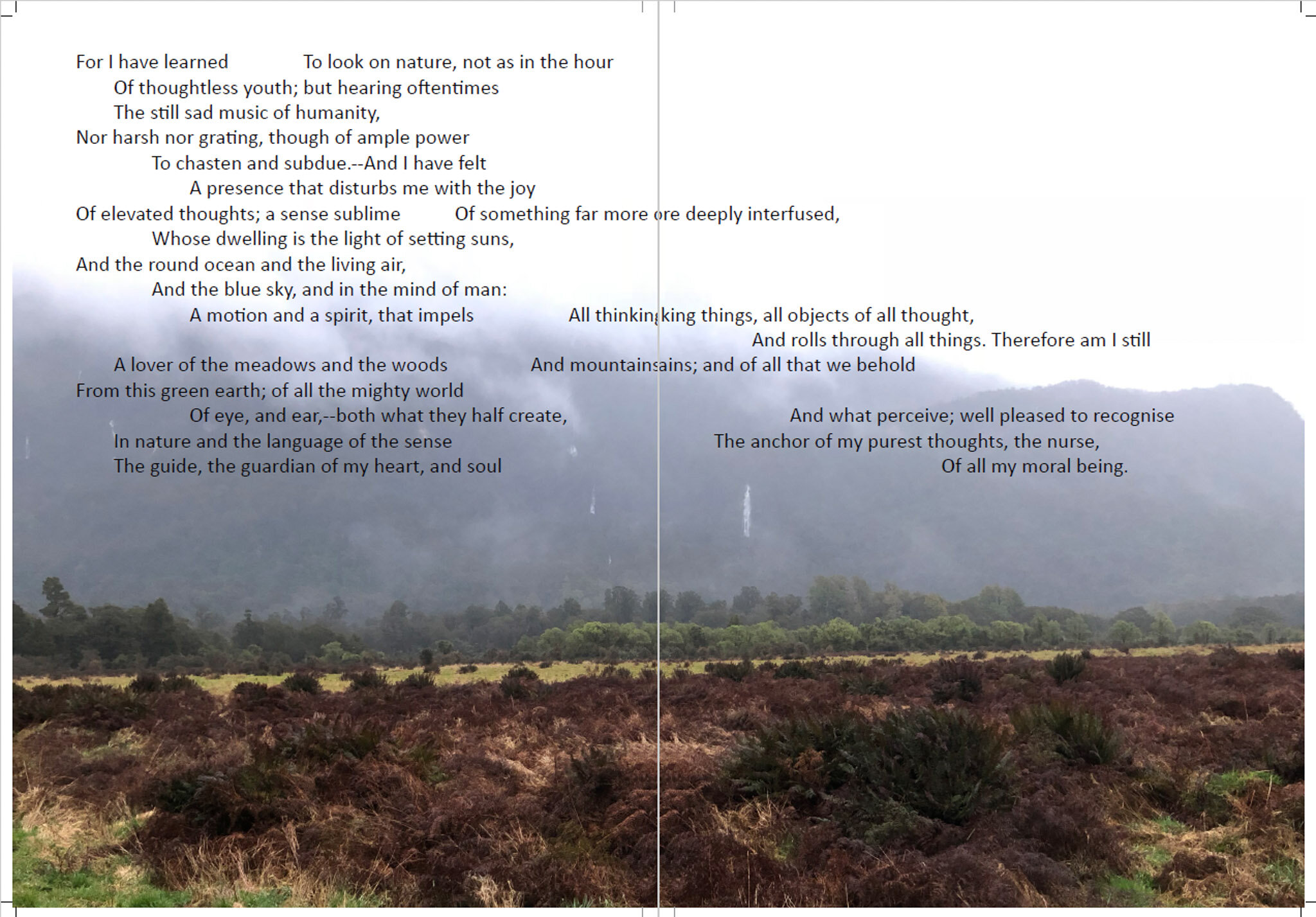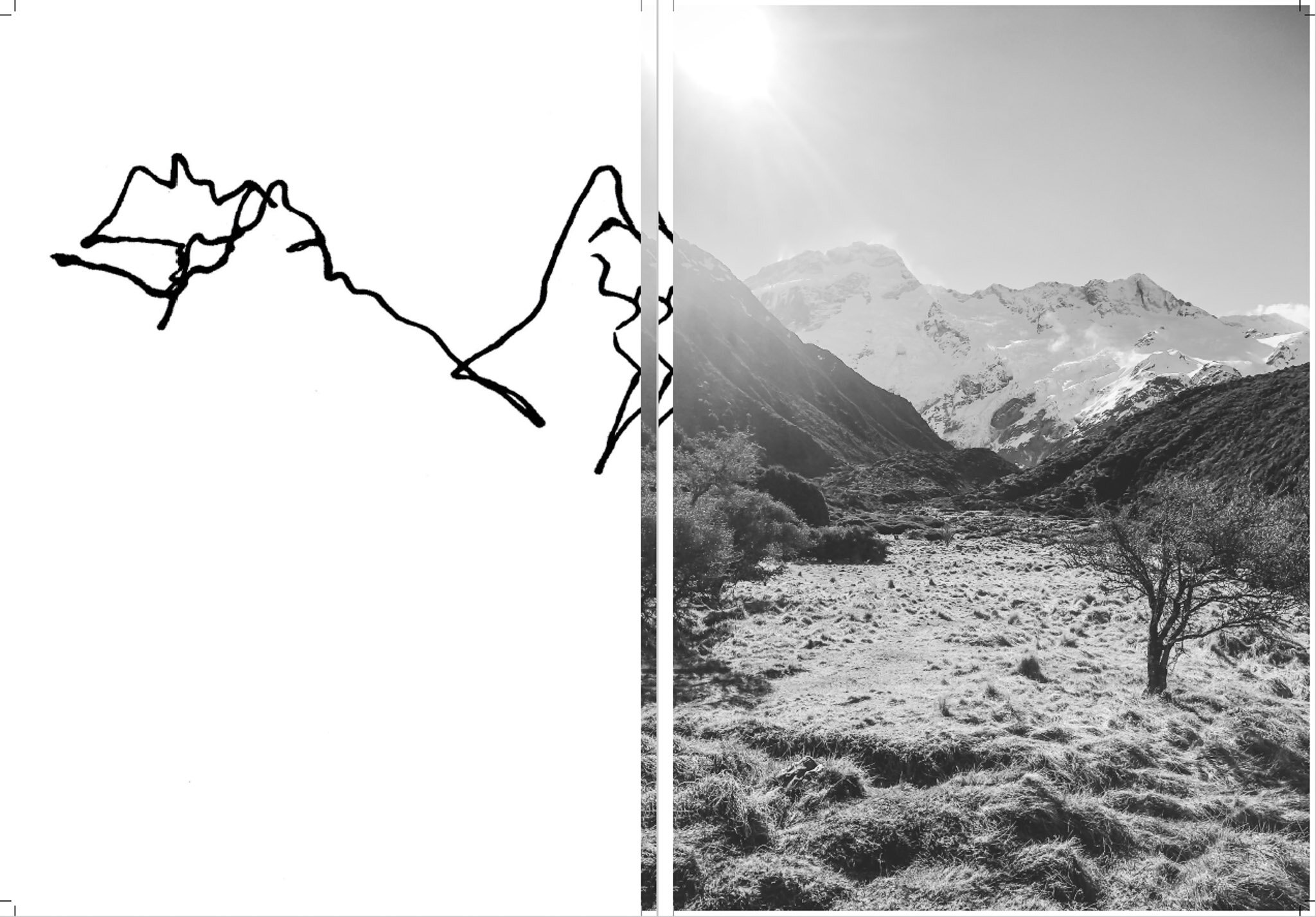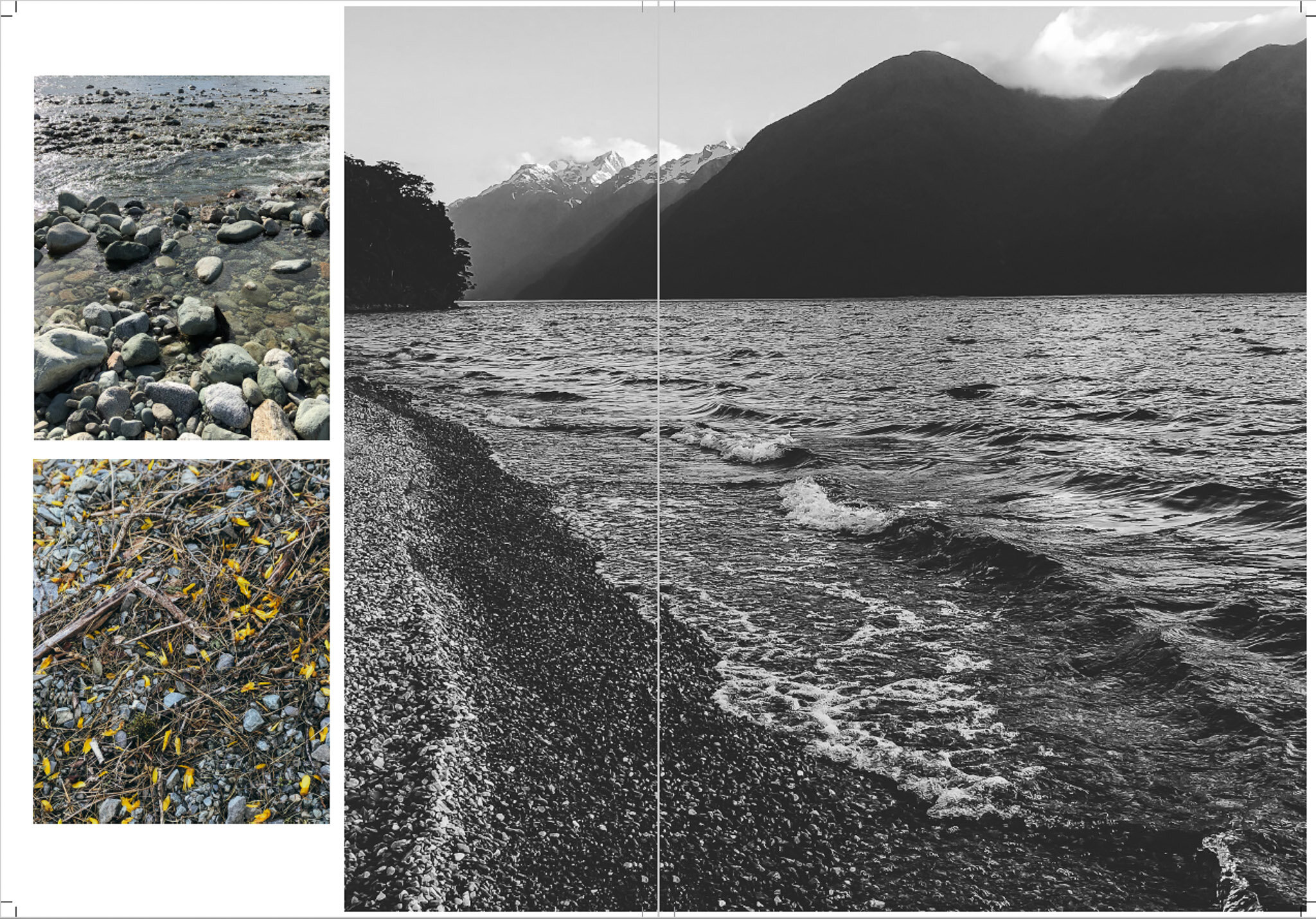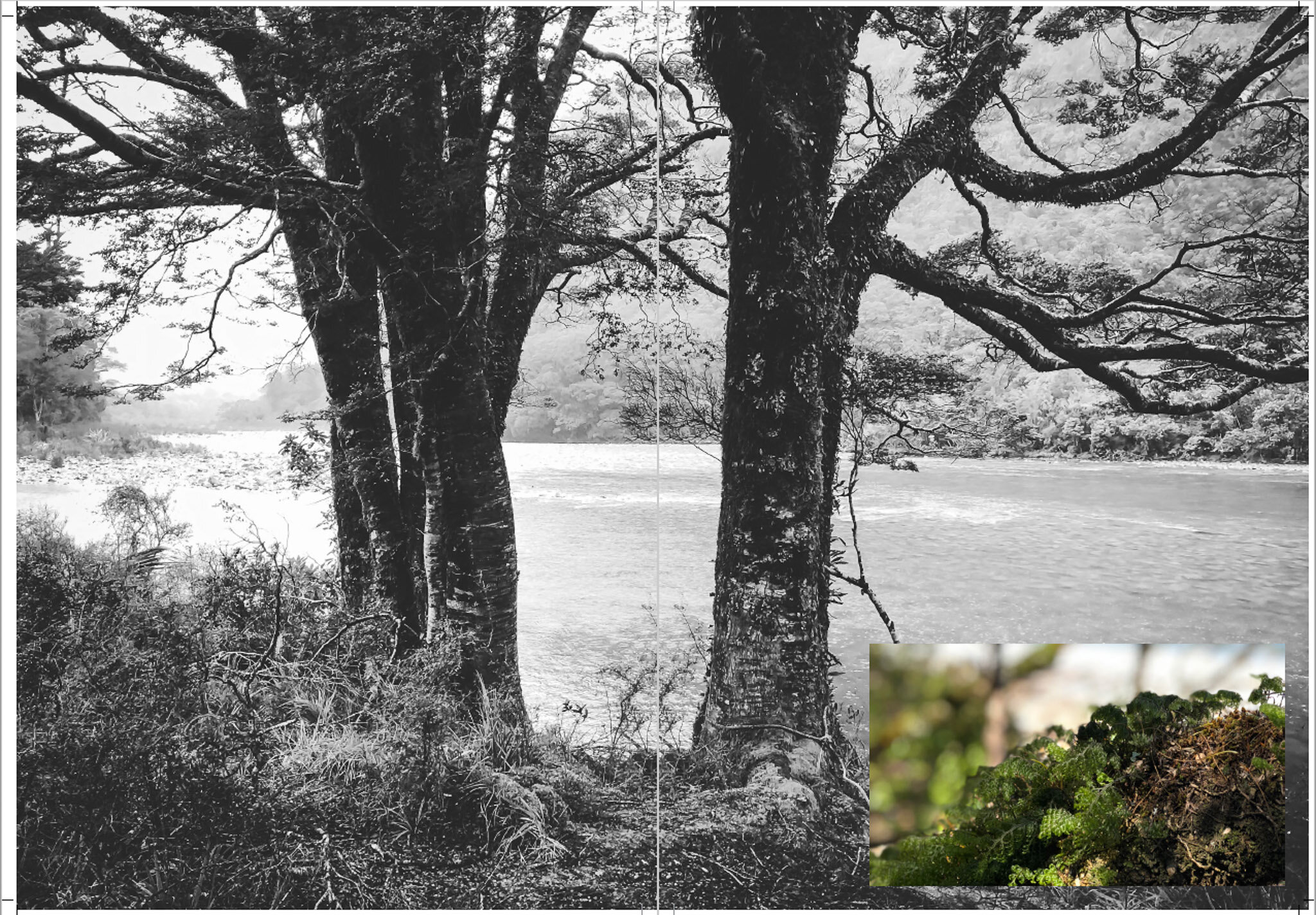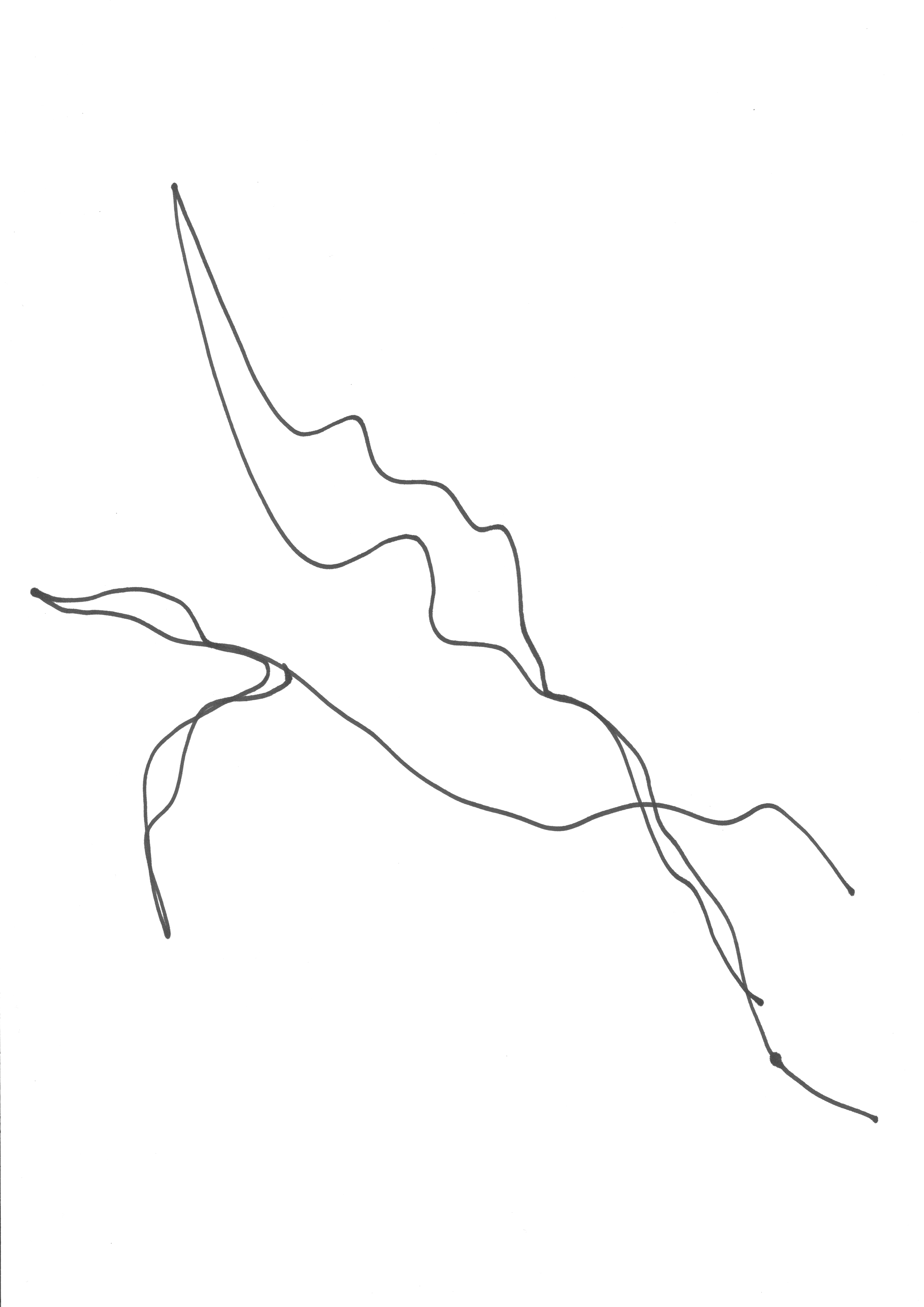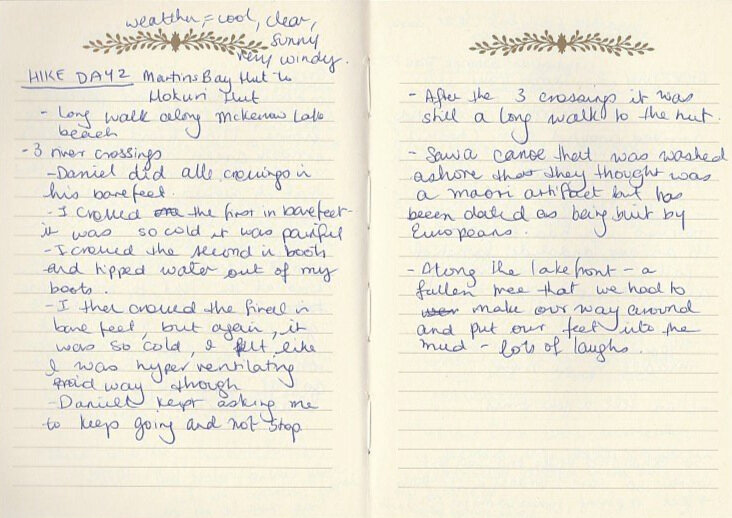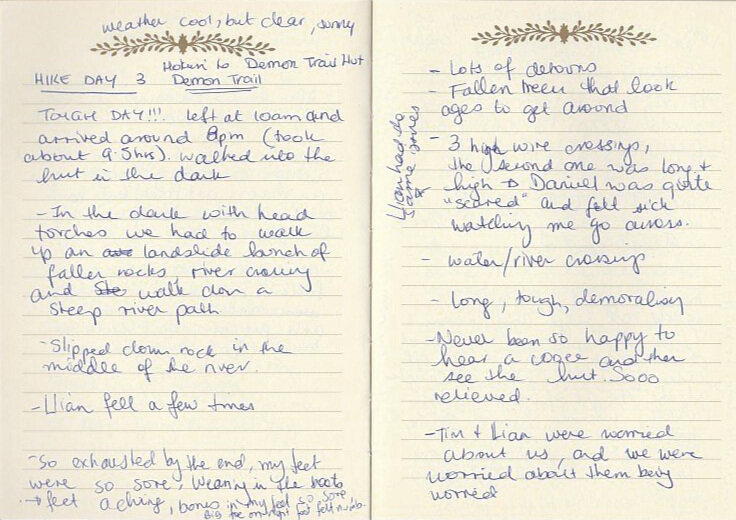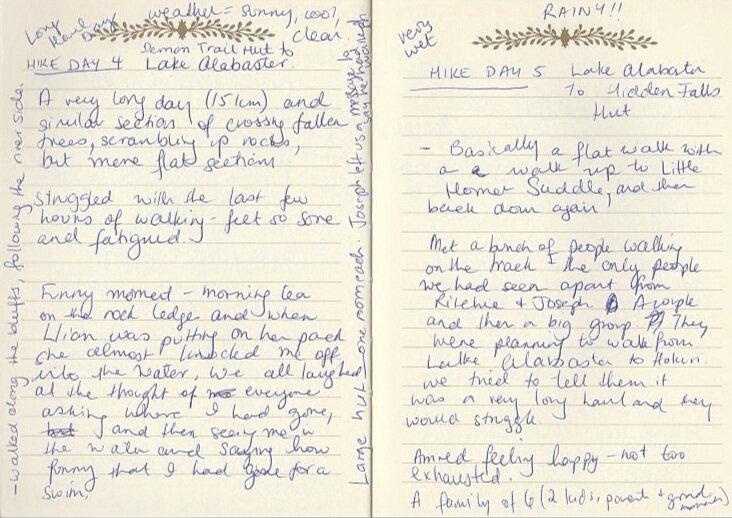Follow the river
Follow the river documents a 56km, 6 day hike along the Hollyford Track, in the south west of the South Island of New Zealand. The hike was undertaken in September 2018 and the images taken using an iPhone 8 Plus. This edited collection of images, artwork and text was inspired by my reading of ‘Wanderlust: A history of walking’ by Rebecca Solnit during 2020.
This book can be viewed at the photo book exhibition ‘I heard a wind’ at Contact Sheet (89 Chandos Street, St Leonards, NSW), from December 2020 - February 2021 (please check with Contact Sheet for opening times).
24.1cm x 32.3cm (9.5 x 12.7”), 44 pages, linen hardcover
Acid-free and archival quality paper, FSC approved
Bound by hand in sewn sections, HP Indigo printing press
Project statement
Experience the awe-inspiring beauty of the mountains, rivers and forest of the Hollyford Valley. With a nod to Romanticism and traditional landscape photography, this work encourages the viewer to take a few moments to immerse themselves into the wilderness.
This work is my attempt to convey the beauty of the landscape that I experienced during a multi-day hike along the Hollyford Track, on the south west coast of the South Island of New Zealand. These images and my experience of this place is unique to those specific days that I walked through it. Just before we started the walk, a series of large storms had swept across the area, so there were sections of the track that had to be improvised, large fallen trees to climb over, and rivers to cross that a few days earlier would have been dry river beds. However, the storms also brought a freshness; new growth, sounds and smells spurred on by the abundance of rain. Even the mountains had their own unique expression during that time, with fresh scars from recent avalanches, peppered with snow, and accentuated by cloud cover. As always, an ever-changing landscape with the natural forces of growth and destruction.
“I like walking because it is slow, and I suspect that the mind, like the feet, works at about 3 miles an hour. If this is so, then modern life is moving faster than the speed of thought, or thoughtfulness.”
During the development of the work, I was reading a book called ‘Wanderlust: The history of walking’ by Rebecca Solnit. I was engaged and inspired by the chapters discussing the evolution of walking from a functional activity to a pleasurable past-time during the time of the Romantics, and the strong ties between landscape photographer and environmentalist Ansel Adams and the hiking expeditions of the Sierra Club, during the 1920s to 1940s. This heavily influenced my construction of the work; the selection of images to share a story of natural beauty, the use of black and white imagery, and the inclusion of loose contour drawings to bring attention to the smaller the details within the larger landscape.
Walking has always been my preferred mode of movement to get myself from point A to B. If the weather is good, my shoes are comfy, and the distance reasonable, then I like to walk rather than bike, drive or catch public transport. In recent years, I’ve recognised that the slow pace of walking was providing me with time to think, to absorb and release. Walking in nature enhances that meditative aspect. It reminds me of my place within the universe – small and yet connected to the environment. And most importantly, it always re-invigorates my sense of awe. I hope that the book provides that opportunity on a small scale and for a brief moment for those that pick it up.
“Major rivers travel from their source, typically in mountainous and other elevated areas, and are fed by tributaries of other smaller streams and rivers until they become quite massive. All of that water is uncompromisingly headed toward the ocean, irrespective of where the river begins.... Occasionally the river may meet obstacles that impede its straight-line flow to the ocean.
... Our own evolution is the same. We may appear to be going backward for a period of time while we are meeting demands... It may seem as though we we’re taking a hiatus, and that may well be true, in aid of moving forward again in a very palpable, tangible way.”
Project experimentation
In earlier phases of the project, I experimented with extending the images, by layering paint, words (Wordsworth poetry) and sketches. I’ve included below a selection of journal entries, written during the hike in 2018. They are mostly short points that I jotted down at the end of each day, tired, but wanting to take notes to remind myself of the journey.
